PEOPLES TEMPLE TIMELINE
1931 (May 13): James (Jim) Warren Jones was born in Crete, Indiana.
1949 (June 12): Marceline Mae Baldwin married James (Jim) Warren Jones.
1954: Jim and Marceline Jones founded Community Unity Church in Indianapolis, Indiana.
1956: Peoples Temple, the renamed Wings of Deliverance (first incorporated 1955), opened in Indianapolis.
1960: People Temple officially became a member of The Disciples of Christ (Christian Church) denomination.
1962: Jim Jones and family lived in Brazil.
1965 (July): Jones, his family, and 140 members of his interracial congregation moved to Redwood Valley, California.
1972: Peoples Temple purchased church buildings in Los Angeles (September) and San Francisco (December).
1974 (Summer): Peoples Temple pioneers began clearing land in the Northwest District of Guyana, South America to develop the Peoples Temple Agricultural Project.
1975 (December): Al and Jeannie Mills, Peoples Temple apostates, founded the Human Freedom Center.
1976 (February): Peoples Temple signed a lease with the Government of Guyana “to cultivate and beneficially occupy at least one-fifth” of 3,852 acres located in the Northwest District of Guyana.
1977 (Summer): Approximately 600 Peoples Temple members moved to Jonestown in a three-month period.
1977 (August): New West Magazine published an exposé of life inside Peoples Temple based upon apostate accounts.
1977 (Summer): Tim Stoen founded the “Concerned Relatives,” an activist group of apostates and family members that urged government agencies and media outlets to investigate Peoples Temple.
1977 (September): A “six-day-siege” staged by Jim Jones occurred in Jonestown in which residents believe they are under attack.
1978 (November 17): California Congressman Leo J. Ryan, members of the Concerned Relatives, and members of the media visited Jonestown.
1978 (November 18): Ryan, three journalists (Robert Brown, Don Harris, and Greg Robinson) and one Peoples Temple member (Patricia Parks) were killed in an ambush of gunfire at the Port Kaituma airstrip, six miles from Jonestown. After the assault at the airstrip more than 900 residents, following the orders of Jones, ingested poison in the Jonestown pavilion. Jones died of a gunshot wound to the head.
1979 (March): The Guyana Emergency Relief Committee obtained funding to transport more than 400 unidentified and unclaimed bodies from Dover, Delaware to be interred at Evergreen Cemetery in Oakland, California. A small monument was erected.
2011 (May 29): A dedication service occurred observing the installation of four memorial plaques at Evergreen Cemetery listing the names of all who died in Jonestown.
2018 (November 18): A memorial service marked the renovation of the burial site, along with the installation of a small monument noting the 2011 dedication.
FOUNDER/GROUP HISTORY
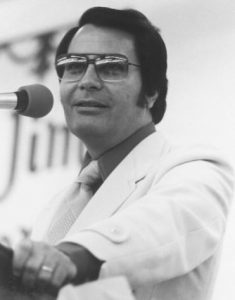
James Warren Jones [Image at right] was born May 13, 1931 to a working class family at the height of the Great Depression in Crete, Indiana (Hall 1987:4). His father, James Thurman Jones, was a disabled veteran, while his mother, Lynetta Putnam Jones, was the principal breadwinner and responsible parent in the family. She greatly influenced her son’s interests in social justice and equality. She was skeptical of organized religion, but did believe in spirits—a belief she communicated to her son (Hall 1987:6). A neighbor took him to Pentecostal church services as a child, and this undoubtedly shaped his understanding of worship as an intensely emotional experience. What emerged from these influences was a self-styled theology that combined aspects of Pentecostalism with social idealism. Jones met Marceline Baldwin in Richmond, Indiana, and the 18-year-old Jones married the 22-year-old on June 12, 1949. The couple moved to Indianapolis in 1951 to attend school.
By 1954, Jones had established his own church, called Community Unity, in Indianapolis (Moore 2009:12). That same year, he preached as a guest minister at the Laurel Street Tabernacle in Indianapolis, Indiana, an Assemblies of God church within the Pentecostal tradition (Hall 1987:42). While the church administrative board lamented Jones’ inclusion of African Americans from his Community Unity Church, his charismatic style attracted a number of working class white members away from the Laurel Street congregation. Jim and Marceline incorporated the Wings of Deliverance on April 4, 1955; a year later, they re-incorporated, moved, and renamed their organization Peoples Temple (Hall 1987:43). By 1957 the Peoples Temple Apostolic Church had gained a reputation in Indianapolis for practicing a social gospel ministry. The congregation voted in 1959 to 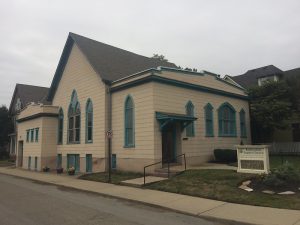 affiliate with the Disciples of Christ (Christian Church), and in 1960 the Peoples Temple Christian Church Full Gospel [Image at right] became an official member of the denomination (Moore 2009:13).
affiliate with the Disciples of Christ (Christian Church), and in 1960 the Peoples Temple Christian Church Full Gospel [Image at right] became an official member of the denomination (Moore 2009:13).
Throughout the 1950s, Jim and Marceline visited Father Divine’s Peace Mission in Philadelphia. Jones was impressed with Father Divine’s interracial vision, his charismatic abilities, and his successful business cooperatives. He also adopted Divine’s practice of having parishioners call him “Father,” and calling Marceline “Mother.” After Father Divine died, Jones attempted to take over the Peace Mission, but Mother Divine rejected his advances. Nevertheless, a number of elderly African American members were attracted to the Temple’s message and moved westward (Moore 2009:16-17).
Jones’ commitment to racial equality led him briefly to chair the Indianapolis Human Rights Commission in 1961. But a vision of nuclear holocaust, coupled with an article in the January 1962 issue of Esquire Magazine identifying the safest places in case of nuclear attack, prompted him to take his family to Belo Horizonte, Brazil, one of the places listed. The Temple continued in Indianapolis without Jones, but faltered without his leadership. Upon his return in 1965, he persuaded about 140 people, half of them African Americans and half Caucasians, to move to Redwood Valley in the California wine country, another safe venue identified by Esquire (Hall 1987:62). There they constructed a new church building and several administrative offices, and began operating a number of care homes for senior citizens and mentally challenged youth.
The progressive political scene in California was yet another reason for Jones’ move west (Harris and Waterman 2004). In Redwood Valley Jones began to recruit young, college-educated whites to complement the large number of working class families who already belonged to Peoples Temple. This cadre of relatively affluent members—most of whom had developed a commitment to peace and justice as part of the Civil Rights movement and anti-Vietnam War protests—assisted poorer members in navigating the social welfare system. They provided a number of services that enabled the poor to receive the benefits to which they were entitled, especially senior citizens who had trouble collecting the Social Security payments they had earned. When the Temple opened a church in the Fillmore District of San Francisco, it attracted thousands of African Americans as well as city officials and political figures. In the heart of the ghetto, the group offered free blood pressure testing for senior citizens, free sickle-cell anemia testing for African Americans, and free child care for working parents. It also hosted a variety of progressive political speakers, from Angela Davis to Dennis Banks.
Hundreds of Temple members lived communally in Redwood Valley, San Francisco, and, less so, in Los Angeles. Older members signed life-care contracts, contributing their Social Security checks in return for room and board, health care, and the goods and services needed for their retirement. In Redwood Valley, Temple members established and operated several care homes for the elderly, the mentally ill, and the mentally challenged, and these enterprises raised money for the group. Those who “went communal,” as Temple members describe it, donated their paychecks to the group and received minimal life support: cramped quarters, a small allowance for necessities, communal meals. Traditional fundraising appeals through mass mailings supported some of the Temple’s many social programs (Levi 1982:xii). A Planning Commission, comprised of about 100 Temple leaders, discussed major organizational decisions, with Jones retaining final decision-making authority.
In 1974, the Temple leadership negotiated with the South American nation of Guyana to develop nearly 4,000 acres in the Northwest District of the country on the 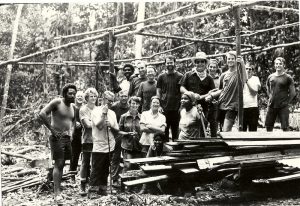 Venezuelan border. By the time the Temple signed an official lease for the land in 1976, pioneers from the group had already spent two years of back-breaking labor [Image at right] to clear jungle in Guyana in order to establish what they called the Peoples Temple Agricultural Project. Guyana, a multiracial state and the only English-speaking country in South America, declared itself to be a cooperative socialist republic. Its black minority government welcomed the prospect of serving as a refuge for Americans fleeing a racist and oppressive society. Moreover, having a large group of ex-patriate Americans so close to the border with Venezuela assured U.S. interest in the area under dispute (Moore 2009:42). The Peoples Temple Agricultural Project grew slowly at first, housing only about 50 people as late as the first months of 1977, but it expanded to more than 400 residents by April, and to 1,000 by the end of the year (Moore 2009:44).
Venezuelan border. By the time the Temple signed an official lease for the land in 1976, pioneers from the group had already spent two years of back-breaking labor [Image at right] to clear jungle in Guyana in order to establish what they called the Peoples Temple Agricultural Project. Guyana, a multiracial state and the only English-speaking country in South America, declared itself to be a cooperative socialist republic. Its black minority government welcomed the prospect of serving as a refuge for Americans fleeing a racist and oppressive society. Moreover, having a large group of ex-patriate Americans so close to the border with Venezuela assured U.S. interest in the area under dispute (Moore 2009:42). The Peoples Temple Agricultural Project grew slowly at first, housing only about 50 people as late as the first months of 1977, but it expanded to more than 400 residents by April, and to 1,000 by the end of the year (Moore 2009:44).
Various pressures led to the relatively speedy immigration from California to Guyana. One impetus was the U.S. Internal Revenue Service’s examination of the Temple’s business-related income. This threatened the church’s tax-exempt status, and raised the potential of shutting down the organization (Hall 1987:197-98). Another incentive derived from the activities of a group of disaffected former members and relatives of current members of Peoples Temple. Known as The Concerned Relatives, the group lobbied various government agencies to investigate the Temple, alleging a number of abuses as well as criminal activity. The Concerned Relatives also brought these same allegations to news media outlets. A highly critical article published in New West Magazine featuring criticism from former members who publicly blasted the Temple and its leadership, was apparently the precipitating factor to drive Jones immediately to Guyana, which he never left (Moore 2009:38-39).
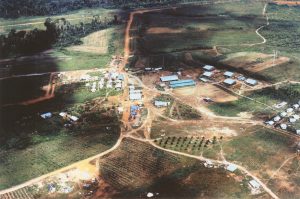
At some point in 1977, the agricultural project became known as Jonestown. [Image at right] Conditions were difficult, but hope was high for life in the “Promised Land,” as Temple members back in the U.S. called it. The work needed to maintain a community of a thousand souls was immense. Members worked in agriculture, construction, maintenance (such as cooking and laundry), childcare for the 304 minors under the age of 18 living there, education, healthcare, and fundraising (making items to sell in Georgetown, which was not easily accessible from Jonestown). Everyone contributed to the community, at times working eleven hours a day, six days a week. Evenings were filled with meetings, educational programs, Russian language lessons (for what people believed was an imminent move to the Soviet Union) and other duties. Residents lived in dormitories, and frequently children were raised apart from their biological parents.
At first the diet was adequate, but as more people arrived, portions became relatively smaller, consisting mainly of beans and rice, with meat or green vegetables reserved for meals when outsiders visited the community. When people such as U.S. Embassy officials, Guyana government representatives, and supportive family members and friends did visit, residents of Jonestown received lengthy briefings to ensure that the image portrayed of Jonestown was positive and convincing.
Although the Temple boasted 20,000 members, it is more likely that California membership peaked at 5,000, with regular attendees totaling between 2,000 and 3,000 (Moore 2009:58). A number of those who left over the years had been members of the upper echelon of Temple leadership, including those responsible for key decision-making, financial and legal planning, and oversight of the organization. They became apostates, that is, public opponents of Peoples Temple (as distinct from individuals who simply abandoned the organization). Among these “defectors” was Tim Stoen, the Temple attorney and Jim Jones’ right-hand man. Stoen gave the fledgling Concerned Relatives group both its star power and organizational acumen, and was key to the success of a public relations campaign designed both to rescue relatives living in Jonestown, and to bring down Jim Jones and Peoples Temple. The Concerned Relatives alleged that Jonestown operated as a concentration camp, and claimed that Jones brainwashed individuals who went to Guyana and held them there against their will (Moore 2009:64-65; see their “Accusation of Human Rights Violations“ published 11 April 1978).
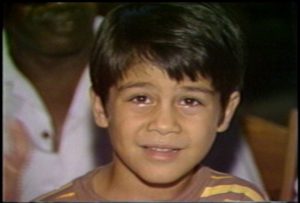
The poster child for the Concerned Relatives (and, coincidentally, for Peoples Temple) was a young boy named John Victor Stoen, [Image at right] the son of Grace Stoen, another apostate. Although Tim Stoen was the putative father, he had signed an affidavit which said that he had encouraged a sexual encounter between his wife and Jim Jones, and that John Victor had been the product of that liaison (Moore 2009:60-61). Tim and Grace joined forces to fight for custody of the boy, and Jones’ vow to hold onto John Victor, even unto death, galvanized the two factions.
As the Stoen custody battled festered, former Temple members Deborah Layton and Yolanda Crawford defected from Jonestown and signed affidavits detailing what they experienced while living there. Family members began contacting the State Department, which in turn directed U.S. Embassy officials in Guyana to visit Jonestown and check on various relatives. In addition to being a party to the John Victor custody case, Tim Stoen filed a number of nuisance lawsuits against the Temple in order to recover money and property for other former members.
The pressure exerted by the Concerned Relatives served to demoralize Jones and the people in Jonestown, and it is clear that Jones’ health and leadership deteriorated significantly. As a result, a leadership corps comprised principally of women ran day-to-day operations in the community (Maaga 1998). At times, Jones became incapacitated through using prescription drugs such as Phenobarbital (Moore 2009:74-75). He would fly into rages, only to calm down moments later. He also had trouble speaking at times, although he also would ramble on for hours well into the night on the community’s public address system, reading news reports from Soviet and Eastern Bloc sources, which presented anti-capitalist and anti-imperialist perspectives highly critical of America. He frequently “portrayed the United States as beset by racial and economic problems” that his followers had escaped by coming to Jonestown (Hall 1987:237). As a result of their long hours in the fields during the day, and their nights punctuated by meetings and harangues over the P.A. system, Jonestown residents became increasingly exhausted and sleep-deprived.
The Concerned Relatives’ letter-writing campaigns to members of Congress finally paid off, and they found an ally in California 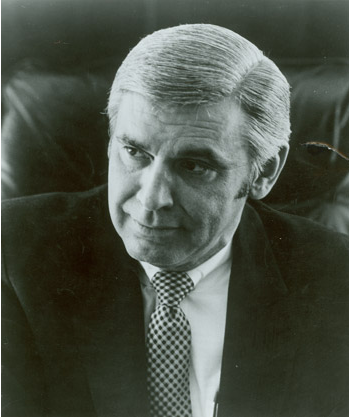 Congressman Leo J. Ryan. [Image at right] A constituent, Sammy Houston, claimed that his son Robert had been murdered by Temple members. (There is no evidence to substantiate his claim, which was investigated by the police at the time of Robert’s death, and was re-examined after events in Jonestown.)
Congressman Leo J. Ryan. [Image at right] A constituent, Sammy Houston, claimed that his son Robert had been murdered by Temple members. (There is no evidence to substantiate his claim, which was investigated by the police at the time of Robert’s death, and was re-examined after events in Jonestown.)
Ryan announced his plans to travel to Jonestown in November 1978. The congressman claimed he was conducting a neutral fact-finding mission, but the people of Jonestown did not see it this way. No other members of Congress accompanied Ryan to Guyana, but several members of the Concerned Relatives, along with news reporters who had written critical articles about the Temple did. The party left for Guyana on November 14, 1978 and spent two days in Georgetown, Guyana’s capital (Moore 2009:91). After lengthy negotiations with Jonestown leadership, Ryan, several of the Concerned Relatives, and most of the journalists were allowed to enter the community on November 17 to interview residents, as well as to seek out people allegedly being held against their will. Jones told Ryan that anyone who wished to leave Jonestown was welcome to do so. The day ended with a rousing performance by the Jonestown Express, the community’s band, and with Ryan announcing that Jonestown looked like it was the best thing that had happened to many people. The crowd cheered. That night, however, a disaffected resident slipped a note to both the U.S. Embassy Deputy Chief of Mission and to an NBC News reporter who were present. The note asked for help to get out of Jonestown (Stephenson 2005:118-19).
Ryan and his entourage continued to interview Jonestown residents the next day, but the upbeat mood of the night before had dissipated. As the day progressed, sixteen residents—including members of two long-time Temple families—asked to leave with the Ryan party. The congressman gathered his group together amid considerable strife. As Ryan attempted to leave Jonestown, a resident named Don Sly, the former husband of a Concerned Relative, attacked Ryan with a knife, inflicting superficial cuts on himself but not the congressman (Moore 2009:94). The congressional party made its way in a truck to the airstrip, located six miles from Jonestown in Port Kaituma, the nearest settlement. As they began to board two small planes to take them to Georgetown, a handful of Jonestown residents who had followed the congressman and his party to the airstrip opened fire. Killed in the ambush were Congressman Leo Ryan, three journalists—Robert Brown, Don Harris, and Greg Robinson—and one Peoples Temple member—Patricia Parks, who had wished to leave Jonestown. A dozen members of the media, defecting members, and staff from Ryan’s office were seriously wounded. Two defectors were shot by Larry Layton, who had posed as a defector, and was already aboard one plane when the shooting began outside (Stephenson 2005:120-27).
Back in Jonestown, the residents congregated in the central pavilion. The mood was grim after the defections. Jones proclaimed that the end had come for the people of Jonestown. He said the outside world had forced them to this extreme situation, and that “revolutionary suicide” was their only option. One resident, Christine Miller, dissented, and asked about going to Russia, saying she thought the children should have a chance to live. Other residents shouted her down, however, and the deaths began (Moore 2009:95-96). Parents were the first to give the drink to infants and children; many mothers poured the poison down their children’s throats before they took the poison themselves (Hall 1987:285). Adults then took the poison from a large vat of purple Flav-R-Aid, a British version of Kool-Aid, mixed with potassium cyanide and a variety of sedatives and tranquilizers (including Valium, Penegram, and chloral hydrate) (Hall 1987:282). Some were injected, some drank from a cup, and some had it squirted into their mouths. Although armed guards stood by to prevent anyone from leaving, in the end they also took the poison. Jones, however, died of a gunshot wound to the head: an autopsy could not determine whether his death had been murder or suicide. Despite early reports to the contrary, only one other person died of a gunshot wound, Annie Moore. Sharon Amos, living in the Temple’s house at Lamaha Gardens, in Georgetown, received the order from Jonestown to commit suicide. She killed  her three children and herself in the bathroom of the Georgetown headquarters. The final death toll in Guyana that day was 918: 909 in Jonestown; five at the Port Kaituma airstrip, and four at the Temple’s house in Georgetown. [Image at right]
her three children and herself in the bathroom of the Georgetown headquarters. The final death toll in Guyana that day was 918: 909 in Jonestown; five at the Port Kaituma airstrip, and four at the Temple’s house in Georgetown. [Image at right]
There were about one hundred survivors. Two families and some young adults left early on the morning of the 18th and hiked up the railroad tracks that led to the community of Matthews Ridge, thirty miles away from Jonestown. Three young men were sent out of the area with suitcases full of cash destined for the Soviet Embassy. Two other young men fled as the deaths were occurring, and two elderly people hid in plain sight. Another half dozen were on procurement missions in Venezuela and on boats in the Caribbean. Finally, about eighty Temple members who had been staying in Lamaha Gardens (including members of the Jonestown basketball team) escaped the deaths by virtue of being 150 miles away.
The government of Guyana denied the request of the U.S. State Department to bury 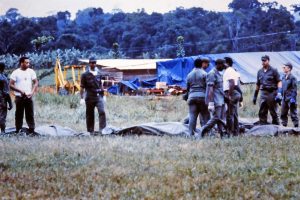 the bodies in Jonestown. A U.S. Army Graves Registration team bagged the remains, which the U.S. Air Force then transported to Dover Air Force Base for identification by the Federal Bureau of Investigation. [Image at right] (Interviews with participants in the bodylift are available at “Military Response to Jonestown” 2020). Routine embalming of all bodies began almost immediately, but one result was that vital forensic evidence was destroyed, which prevented accurate determination of death for seven individuals autopsied by the Armed Forces Institute of Pathology. Relatives claimed approximately one half of the number of bodies, while about 400 bodies remained unidentified or unclaimed. The majority of the unidentified were children. An interfaith group in San Francisco found a cemetery in Oakland, California willing to bury these bodies, after facing rejection by a number of other cemeteries afraid of criticism. In May, 2011 four memorial plaques were placed at the burial site in Evergreen Cemetery, listing the names of all those who died on November 18, 1978.
the bodies in Jonestown. A U.S. Army Graves Registration team bagged the remains, which the U.S. Air Force then transported to Dover Air Force Base for identification by the Federal Bureau of Investigation. [Image at right] (Interviews with participants in the bodylift are available at “Military Response to Jonestown” 2020). Routine embalming of all bodies began almost immediately, but one result was that vital forensic evidence was destroyed, which prevented accurate determination of death for seven individuals autopsied by the Armed Forces Institute of Pathology. Relatives claimed approximately one half of the number of bodies, while about 400 bodies remained unidentified or unclaimed. The majority of the unidentified were children. An interfaith group in San Francisco found a cemetery in Oakland, California willing to bury these bodies, after facing rejection by a number of other cemeteries afraid of criticism. In May, 2011 four memorial plaques were placed at the burial site in Evergreen Cemetery, listing the names of all those who died on November 18, 1978.
Temple lawyers in San Francisco filed for bankruptcy of the corporation in December 1978, and the San Francisco Superior Court agreed to the dissolution the next month. Judge Ira Brown appointed Robert Fabian to serve as Receiver of the assets, and the local attorney was able to track down more than $8.5 million in banks around the world, in addition to assets traced to San Francisco. Judge Brown ordered all claimants against the Temple to petition the court within four months: 709 claims were made (Moore 1985:344). In May 1980, Fabian proposed a plan to settle the $1.8 billion in claims against the group, by issuing “Receiver’s Certificates” for prorated shares of Temple funds to 403 plaintiffs who had filed wrongful death claims (Moore 1985:351). In November, 1983, a few days before the fifth anniversary of the deaths, Judge Brown signed the order which formally terminated Peoples Temple as a nonprofit corporation. The court had paid out more than $13 million (Moore 1985:354-55).
DOCTRINES/BELIEFS
The belief system of Peoples Temple combined a number of different religious and social ideas, including Pentecostalism, the Christian Social Gospel, socialism, communism, and utopianism. The charisma of Jim Jones and the idealism of Temple members who believed that their vision would create a better world held together this wide-ranging mix of beliefs and practices. Hall calls Peoples Temple an “apocalyptic sect,” which expected the imminent end of the capitalistic world (Hall 1987:40). Wessinger classifies Peoples Temple as a catastrophic millennial group, characterized by a radical dualism that pitted the “Babylon” of the United States against the New Eden of Jonestown (Wessinger 2000:39). All of these views describe the Temple in part.
Jones initially practiced a lively form of Christianity borrowed largely from Pentecostalism. He relied upon the prophetic texts of the Bible to exhort his congregation to work for social justice. An analysis of audiotaped worship services from Peoples Temple in Indiana and California indicates Jones’ debt to Black Church traditions (Harrison 2004). Services followed a free-form style in which music played a key role, the organ emphasizing Jones’ call-and-response style of preaching. His sermons bore themes important to the Black Church: liberation, freedom, justice, and judgment.
The theology of the Temple changed, however, as the role and person of Jim Jones became more exalted. Chidester argues that a coherent theology emerges from Jones’ sermons (Chidester 1988:52). In this theology, Jones asserted that the “Sky God” of 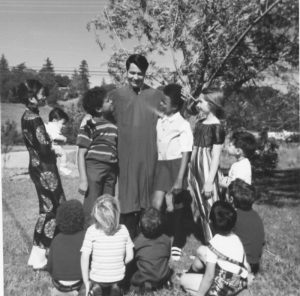 traditional Christianity did not exist, but a genuine God, referred to as Principle or Divine Socialism, did exist in the person of Jim Jones. [Image at right] If God is Love, and Love is Socialism, then humans must live socialistically to participate in God. Moreover, this allowed for personal deification, as Jones quoted John 10:34: “ye all are gods” (Chidester 1988:53). Thus, members of Peoples Temple practiced what they called “apostolic socialism,” that is, the socialism of the early Christian community described in Acts 2:45 and 4:34-35. “No one can privately own the land. No one can privately own the air. It must be held in common. So then, that is love, that is God, Socialism” (Chidester 1988:57, quoting Jones on Tape Q 967).
traditional Christianity did not exist, but a genuine God, referred to as Principle or Divine Socialism, did exist in the person of Jim Jones. [Image at right] If God is Love, and Love is Socialism, then humans must live socialistically to participate in God. Moreover, this allowed for personal deification, as Jones quoted John 10:34: “ye all are gods” (Chidester 1988:53). Thus, members of Peoples Temple practiced what they called “apostolic socialism,” that is, the socialism of the early Christian community described in Acts 2:45 and 4:34-35. “No one can privately own the land. No one can privately own the air. It must be held in common. So then, that is love, that is God, Socialism” (Chidester 1988:57, quoting Jones on Tape Q 967).
As Jones felt more secure in his California base, he exchanged religious rhetoric for political rhetoric more and more. He denounced traditional Christianity and excoriated the Bible, which he referred to as the “Black Book” that had enslaved so many of their forebears. In the early 1970s, he published a twenty-four page booklet titled “The Letter Killeth,” in which he listed all of the contradictions and atrocities contained in the Old and New Testaments. Once the group moved to Guyana, Jones dropped all religious references, except when visitors came (Moore 2009:55). No worship services were conducted in Jonestown. Community planning meetings, news readings, and public events replaced worship. It seems likely, though, that older members retained traditional Christian beliefs (Sawyer 2004).
Although Jones claimed to be a communist, the Communist Party USA had no records of his membership, and disavowed any connection with him after the deaths in Jonestown. Jones made up his communism as he went along, creating an eclectic blend of class consciousness, anti-colonial struggle, selected Marxist ideas, and his perceptions of the community’s needs at the moment. Whatever radical politics he and the group may have shared were somewhat muted, given the fact that they openly supported a variety of Democratic candidates in local, state, and national politics once they relocated to San Francisco. A number of writers have asserted that the Temple helped to elect George Moscone as San Francisco mayor, perhaps even committing fraud to do so, “but the voting clout of actual Temple members in San Francisco seems to have been grossly misperceived” (Hall 1987:166).
Rather than doctrinaire communism, the ideology of Peoples Temple focused on commitment to the community, and to elevating the group above the individual. Members deemed self-sacrifice the highest form of nobility, and selfishness as the lowest of human behavior. In addition, commitment to Jim Jones was required. Loyalty tests ensured commitment to the cause as well as to the leader. No one looked askance at various practices because they made sense within a worldview that anticipated an imminent apocalypse, either through nuclear war or genocide against people of color. By fleeing the United States and attempting to create an alternative society, Temple members believed they might survive this harsh inevitability, perhaps even serving as a new model for humanity. At the same time, though, Jones’ pervasive rhetoric concerning the coming Armageddon undermined any sort of hopeful outlook.
RITUALS/PRACTICES
To promote the shift from the self-centered, elitist individualism promoted by capitalism, Jones encouraged re-training, or indoctrination, in the selfless, populist communalism promoted by socialism through a practice known as “catharsis.” Even in Indianapolis, 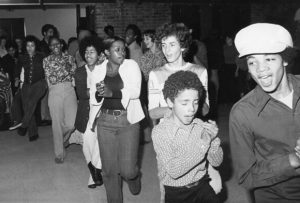 “corrective fellowship” meetings were held in which church members offered self-criticism. But catharsis as a regular part of Temple practice took root in Redwood Valley. [Image at right] Catharsis sessions required public confession and communal punishment for transgressions against the community and its members (Moore 2009:32-33). For example, if a teenager was accused of being rude to a senior citizen, the congregation would hear the evidence and vote on the teenager’s innocence or guilt, and on the punishment to be received. The penalty could be a severe spanking administered by one of the seniors. When Jones introduced the “Board of Education,” a one-by-four inch board two and a half feet long, he assigned a large woman to administer the beatings: “She was strong and knew how to whip hard,” according to Mills (1979). Adults who transgressed were punished by being forced to box with other Temple members. A diary kept by Temple member Edith Roller, for example, reported a boxing match between a young man accused of sexism, and a young woman. The woman knocked out the man, to the delight of the crowd in attendance (Moore 2009:32-33).
“corrective fellowship” meetings were held in which church members offered self-criticism. But catharsis as a regular part of Temple practice took root in Redwood Valley. [Image at right] Catharsis sessions required public confession and communal punishment for transgressions against the community and its members (Moore 2009:32-33). For example, if a teenager was accused of being rude to a senior citizen, the congregation would hear the evidence and vote on the teenager’s innocence or guilt, and on the punishment to be received. The penalty could be a severe spanking administered by one of the seniors. When Jones introduced the “Board of Education,” a one-by-four inch board two and a half feet long, he assigned a large woman to administer the beatings: “She was strong and knew how to whip hard,” according to Mills (1979). Adults who transgressed were punished by being forced to box with other Temple members. A diary kept by Temple member Edith Roller, for example, reported a boxing match between a young man accused of sexism, and a young woman. The woman knocked out the man, to the delight of the crowd in attendance (Moore 2009:32-33).
Transgressions revealed in catharsis ranged from selfishness, sexism, and discourtesy to drug or alcohol abuse, and petty crimes for which members could be arrested and convicted by law enforcement. Temple members considered catharsis sessions as a way to improve individual behavior without resorting to authorities like the police or public welfare officials. Mills (1979) claims that members said what they thought Jones wanted to hear, though others apparently believed in the efficacy of catharsis to solve personal and family problems (Moore 1986).
While ritualized catharsis sessions seemed to end with the move to Jonestown, self-criticism and collective condemnation of transgressors continued during Peoples Rallies. These meetings transpired quite frequently in the evenings after the work day. Individuals responsible for various departments, such as the health clinic or the livestock, reported on progress and problems. In addition, individuals would be criticized for decisions that went awry and behavior that seemed self-serving. Family members and partners had a special responsibility to chastise their own.
Peoples Rallies faced inward, addressing the conditions existing in Jonestown. White Nights, on the other hand, looked outward, responding to the threats, real and imagined, that beset the community. A White Night, so-named to counter racist stereotypes (blackmail, blacklist, blackball, etc.), was an emergency drill called by Jones to prepare community members to defend themselves again imminent attack. Some precedent for these drills may have been set when Jones faked an attack upon his person in Redwood Valley (Reiterman and Jacobs 1982:201-02). White Nights “signified a severe crisis within Jonestown and the possibility of mass death during, or as a result of, an invasion” (Moore 2009:75). The first one in Jonestown probably occurred in September, 1977, when the lawyer for Tim and Grace Stoen traveled to Guyana to serve court papers upon Jones. Men, women, and children armed themselves with machetes and other farm implements, and stood along the perimeter of the settlement for days, sleeping and eating in shifts. Usually White Nights corresponded to perceived threats, such as when allies in the Guyana government were out of the country. As audiotapes recovered from Jonestown indicate, White Nights usually included discussions of suicide, during which individuals declared their willingness to kill their children, their relatives, and themselves rather than submit to the attackers.
Suicide drills have been conflated with White Nights, but were quite different in that people actually practiced taking what was supposedly poison. These drills, which served as tests of loyalty to the cause, were discussed as early as 1973 when eight young high profile Temple members defected (Mills 1979:231). In 1976 Jones staged a test for members of the Planning Commission, telling them that the wine they had drunk was actually poison to see how they would react (Reiterman and Jacobs 1982:294-96). Piecing together documents from Deborah Layton, Edith Roller, and other accounts, it appears that there were at least six suicide rehearsals in Jonestown in 1978 (Layton 1998; Roller Journal, Alternative Considerations of Jonestown and Peoples Temple). Even when suicide was not being rehearsed, it progressively became part of the general conversation more and more, especially during Peoples Rallies (Moore 2006). Individuals also wrote notes to Jones describing assassination and martyrdom plans, such as blowing up the Pentagon or other buildings in Washington, D.C. (Moore 2009:80). Thus, when they were not re-enacting suicide, Temple members were thinking and talking about it.
ORGANIZATION/LEADERSHIP
The Temple had a pyramidal organizational structure, with Jim Jones and a few select leaders at the very tip; a Planning Commission comprising about 100 members near the top; members who lived communally at the next level; and the general rank and file at the base (Moore 2009:35-36). Individuals close to the base of the pyramid did not experience the same levels of coercion, or commitment, as those who had “gone communal” or were further up the pyramid. Even within the Planning Commission, there were a number of inner circles. These included those who helped Jones to fake miraculous healings; those who arranged questionable property transfers; those who practiced dirty tricks (like going through people’s garbage); and those who carried cash to foreign banks.
Despite the rhetoric of racial equality, race and class distinctions continued to exist. According to Maaga, “It was almost impossible for black persons to make their way into positions of influence in the Temple” (Maaga 1998:65). An interracial group of eight young adults defected in 1973, leaving behind a note excoriating the advancement of unproven new white members over time-tested black members:
You said that the revolutionary focal point at present is in the black people. There is no potential in the
white population, according to you. Yet, where is the black leadership, where is the black staff and black attitude? (“Revolutionaries Letter,” Alternative Considerations of Jonestown).
Although some African Americans held leadership positions in Jonestown, the major decision-making power (including planning for mass suicide) remained with whites.
Jones used sex to control Temple members. He arranged marriages, broke up partnerships, and separated families, all in order to make himself the principal object of people’s sexual desire. Encouraging infidelity to one’s partner, Jones demanded fidelity to himself alone, even from the men and women he forced to have sex with him. At the same time, in an effort to create a new, multi-racial society, Jones promoted bi-racial partnerships and the adoption or birth of bi-racial children. A Relationship Committee run by the Planning Commission was established to approve and monitor partnerships between couples.
Jones also accused everyone of being gay; he frequently proclaimed himself to be the only true heterosexual (Hall 1987:112). Harvey Milk, the first openly-gay San Francisco County Supervisor, frequently visited the Temple and was a strong supporter, especially after he received dozens of condolence messages from members following his partner’s suicide. While embracing Milk’s support, Jones also suggested that homosexuality was a problem that did not exist in a true communist society. The Bellefountaines’ examination of the way gays and lesbians were treated within the Temple reveals a contradictory environment of anti-gay rhetoric coupled with an acceptance of gay relationships (Bellefountaine and Bellefountaine 2011).
ISSUES/CHALLENGES
Given the tragic demise of hundreds of Americans, a number of issues of controversy have arisen. Five major questions seem to recur in popular and scholarly literature: 1) What was the level of violence throughout the course of the Temple’s existence? 2) Was Jonestown a concentration camp? 3) What was the status of Jim Jones’ mental health from earliest childhood until his death? 4) Is it accurate to call the deaths in Jonestown suicide, or was it murder? 5) Did the CIA stage the deaths in Jonestown? Two additional controversies have emerged more recently; 6) the first concerns the debate over whether or not to include Jones’ name on a memorial plaque that listed all those who died on November 18,1978; 7) the other concerns the significance of Jonestown in American life and culture.
1. What was the level of violence in Peoples Temple? It is clear that violence existed inside Peoples Temple at certain moments in its history, ranging from verbal abuse, to corporal punishment, to mental torture, to physical torture. Moore (2011) identified four types of violence that occurred, noting increasingly brutal mistreatment in the final year at Jonestown. The most socially acceptable form of violence consisted of discipline, by which individuals were punished for moral infractions such as lying, stealing, cheating, or social infractions such as smoking or using drugs. The punishment tended to fit the crime: a child who had bitten another, was bitten himself; children who stole cookies from the store were spanked with twenty-five whacks. The next level comprised behavior modification in order to change bourgeois patterns of behavior (racism, sexism, classism, elitism, ageism, and so on). Corporal punishment, such as boxing, or nonviolent penance such as housecleaning or paying fines, tended to be used to deal with these crimes against the group. One of the most extreme forms of behavior modification was the time a pedophilic member was beaten on the penis until it bled (Mills 1979:269).
“While discipline and behavior modification might be considered more or less socially accepted (at least in theory if not in practice), two additional forms of violence existed within the Temple that did not mirror the larger society: behavior control and terror” (Moore 2011:100). Behavior control included separating families, informing on other members (and on one’s own thoughts), regulating sexual activity, and, once in Jonestown, governing all aspects of individual life and thought to the extent possible. Jones inculcated a sense of generalized terror beginning in the 1960s with predictions of nuclear war, and continuing in the 1970s with prophecies of racial genocide, fascist takeover, and terrible torture. Terror became more personal in Jonestown, with people fearing for their lives during White Nights, and with actual incidents of torture, such as punishing a woman by having a snake crawl over her; or, tying two young boys up in the jungle and telling them tigers would get them (Moore 2011:103). Residents believed that enemies were intent upon their destruction, and although this is somewhat true (the Concerned Relatives did indeed intend the annihilation of Jonestown), they were convinced their foes planned kidnappings, torture, and murder. When Leo Ryan announced his visit to Jonestown, the widespread sense of terror only intensified.
2. Was Jonestown a concentration camp? There is broad agreement that conditions in Jonestown, though difficult by middle-class standards, were acceptable, and even agreeable, until late 1977. Reports by U.S. Embassy visitors were generally favorable. U.S. Ambassador Maxwell Krebs described the atmosphere in the small jungle community as “quite relaxed and informal” in 1975. “My impression was of a highly motivated, mainly self-disciplined group, and of an operation which had a good chance of at least initial success” (U.S. Committee on Foreign Affairs 1979:135). By mid-1977, however, an influx of more immigrants than the community could handle created a number of serious problems, especially in the areas of food and housing. Deterioration in living and working conditions, coupled with an intensification in terror, began in 1978, and serious decline occurred in the summer months of that year.
It is true, as the Concerned Relatives charged in their declaration of “Human Rights  Violations,” that incoming and outgoing mail was censored; that travel was restricted; that family members could not visit relatives in Jonestown; and that residents put their best face forward for visitors. [Image at right] Situated in the middle of dense jungle, with only two villages accessible by road (Port Kaituma six miles away and Matthews Ridge 30 miles distant) and connected only by air or river travel to the rest of the world, Jonestown was an encapsulated community, almost completely isolated from contact with outsiders. At the same time, Jonestown did not acquire its totalistic profile apart from the agitation of its “cultural opponents” (Hall 1995). As Hall observes, anticult activists played a role in the outcomes in Jonestown and at Mt. Carmel. In their article that analyzes the endogenous (internal) factors leading to violence in new religious movements and the exogenous (external) factors, Anthony, Robbins, and Barrie-Anthony (2011) describe a “toxic interdependence” of “anticult and cult violence,” and suggest that “some groups may be so highly totalistic that they are very vulnerable to [a] triggering effect,” that is, acting out totalistic projections from the outside world (2011:82). In other words, conditions in Jonestown may have declined in response to the level of threat residents believed to exist.
Violations,” that incoming and outgoing mail was censored; that travel was restricted; that family members could not visit relatives in Jonestown; and that residents put their best face forward for visitors. [Image at right] Situated in the middle of dense jungle, with only two villages accessible by road (Port Kaituma six miles away and Matthews Ridge 30 miles distant) and connected only by air or river travel to the rest of the world, Jonestown was an encapsulated community, almost completely isolated from contact with outsiders. At the same time, Jonestown did not acquire its totalistic profile apart from the agitation of its “cultural opponents” (Hall 1995). As Hall observes, anticult activists played a role in the outcomes in Jonestown and at Mt. Carmel. In their article that analyzes the endogenous (internal) factors leading to violence in new religious movements and the exogenous (external) factors, Anthony, Robbins, and Barrie-Anthony (2011) describe a “toxic interdependence” of “anticult and cult violence,” and suggest that “some groups may be so highly totalistic that they are very vulnerable to [a] triggering effect,” that is, acting out totalistic projections from the outside world (2011:82). In other words, conditions in Jonestown may have declined in response to the level of threat residents believed to exist.
3. What was the status of Jim Jones’ mental health? The introduction to Rosenbaum’s Explaining Hitler (1998) presents an overview of his analysis of the many attempts to understand how Adolf Hitler came to be who and what he was. The subtitle, The Search for the Origins of His Evil, could equally describe a number of popular and scholarly works about Jim Jones. Rosenbaum’s catalog of explanations (mountebank, true believer, mesmeric occult messiah, scapegoat, criminal, abused child, “Great Man,” and victim, among others) can be and have been applied to Jones. Accounts range from Jones being crazy and evil from his youth (Reiterman and Jacobs 1982, Scheeres 2011); that his “herculean conscience” to do good ultimately overwhelmed him (Rose 1979); that “audience corruption” deluded him into believing his own rhetoric (Smith 2004); and other evaluations.
It is clear that Jones was charismatic, manipulative, sensitive, and egocentric. Not as clear is the extent of his abilities as a faith healer. One thing that many Jonestown survivors and former Temple members agree on is that Jones had paranormal abilities. Although sham faith healings occurred in the San Francisco Temple, even some critics of those healings admit that on occasion the healings were genuine (compare Beck 2005 and Cartmell 2006).
Equally clear is that Jones began using barbiturates in San Francisco, and possibly earlier, to manage his schedule. His long-term drug abuse became apparent in Jonestown. U.S. Embassy officials visiting 7 November 1978 noted that his speech was “markedly slurred” and that he seemed mentally impaired (U.S. Committee on Foreign Affairs 1979:143). Audiotapes made in Jonestown confirm Jones’ mental and speech deficiencies. His autopsy revealed toxic levels of pentobarbital in his liver and kidneys, thus indicating a drug addiction (“Autopsies” 1979).
4. Were the deaths in Jonestown suicide or murder? The question of whether or not residents of Jonestown voluntarily committed suicide, or whether they were coerced, and therefore murdered, continues in lively online debates (“Was It Murder or Suicide?” 2006). Evidence from the audiotape made 18 November (Q 042) as well as eyewitness accounts indicate that parents killed their children; even if youngsters voluntarily drank the poison, the 304 children and minors under age eighteen are considered murder victims. Some senior citizens were found dead in their beds, evidently injected, and these individuals were also murdered. Debate centers on the able-bodied adults, and if they actually chose to die or if they were physically coerced by members of the Jonestown security team. After a brief inspection of the scene, Dr. Leslie Mootoo, the chief pathologist for the government of Guyana, reported seeing syringes without needles, presumably to insert poison into the mouths of children or unwilling adults. He also stated that he saw needle puncture marks on the backs of eighty-three out of 100 individuals he examined (Moore 2018a). Yet according to Odell Rhodes, an eyewitness, most people died “more or less willingly” and Grover Davis, who watched the suicides before deciding to hide himself in a ditch, said “I didn’t hear nobody say they wasn’t willing to take suicide shots… They were willing to do it” (Moore 1985:331). No one rushed the vat, according to Skip Roberts, the Assistant Police Commissioner for Crime in Guyana investigating the deaths, “because they wanted to die. The guards weren’t even necessary at the end” (Moore 1985:333).
Members of Peoples Temple had long been conditioned to accept the necessity of giving their lives for the cause of justice and freedom. African Americans living in the 1960s and 1970s saw the ranks of political activists decimated in the violent deaths of Medgar Evers, Malcolm X, Martin Luther King Jr., and the leaders of the Black Panther Party. The Panthers’ Huey Newton had observed that activism required a commitment to “revolutionary suicide,” that is, a willingness to put one’s life on the line because radical politics in the 1970s were suicidal. Although Jones appropriated Newton’s language, he altered the concept in a significant way. Newton argued that revolutionary activism, by definition, leads to conflict with the state, and that the state eventually kills its opponents in defense of itself and its institutions. Jones interpreted “revolutionary suicide” more literally, meaning that one must kill oneself in order to advance the revolution (Harris and Waterman 2004).
The rhetoric of suicide is evident in many Temple documents. Programs at the Temple in San Francisco and issues of the group’s newspaper, Peoples Forum, focused on the ever-present reality of torture and death. Letters and notes written to Jones and to family members expressed a willingness to die for their beliefs. Audiotapes affirm these revolutionary vows to commit suicide. The Concerned Relatives pointed out that one Jonestown resident wrote in April 1978 that the group would rather die than be hounded from one continent to the next (Moton 1978). Further reports of suicide drills came from Yolanda Crawford that April and from Deborah Layton in June.
Although residents of Jonestown took the rhetoric of suicide seriously, it would be a mistake to conclude that, on the last day, they believed they were participating in simply another drill. The defections of long-time members had sobered the community, and with the news of the deaths at the airstrip, they understood that the end of their communal experiment was in sight. The vehemence with which Christine Miller argued against suicide indicates that she took the plan seriously. And when the first persons taking the poison died, it was immediately clear that this was the real thing. If parents did indeed poison their own children first, it seems likely that they intended to poison themselves as well. They had believed that their children would be tortured by government forces in the wake of Ryan’s assassination; they saw the end of the Promised Land with the invasion of Ryan and their enemies; they had practiced taking the poison; and they believed that loyalty to each other and to their cause required death. Nevertheless, questions remain, and, as Bellefountaine writes, “When confronted with the question of whether the deaths in Jonestown should be classified as murders or suicides, most people feel comfortable joining the two words into a phrase that covers both options [murders-suicides]. But it doesn’t quite fit” (Bellefountaine 2006).
5. Was Jonestown the result of a government conspiracy? A number of conspiracy theories have arisen concerning the deaths in Jonestown because of conflicting accounts of the deaths, inconsistencies in news accounts, and the demise of other groups that shared the Temple’s radical politics. The earliest report of the deaths came from the Central Intelligence Agency, in a message communicated over an intelligence communications network (“The NOIWON Notation” 1978). This, coupled with the fact that Richard Dwyer, the Deputy Chief of Mission at the U.S. Embassy in Georgetown, was probably working for the CIA, as was U.S. Ambassador John Burke, has served as fuel for a large number of conspiracy theories in both print and electronic forms (Moore 2005). Some claim that Jim Jones was a rogue CIA agent who was involved in a mind control experiment. Others assert that the United States government killed all of the inhabitants of Jonestown because it feared the propaganda victory for the Soviet Union if it did indeed become the new home for Peoples Temple. Still others argue that Jonestown represented a right wing conspiracy to execute genocide on black Americans (Helander 2020). None of these theories are considered here because, to date, no evidence beyond conjecture and speculation has been presented. Psychological analyses that rely on assumptions of brainwashing or coercive persuasion also fail to adequately address what happened and why. Theories of the all-powerful cult leader, able to turn sensible people into mindless zombies, collapse when we listen to the community’s conversations captured on Jonestown’s audiotapes and to the discussions that former members of Peoples Temple still have about their experiences within the movement.
6. Should Jim Jones’ name be on a Jonestown memorial? The Rev. Jynona Norwood, an African American pastor from Los Angeles,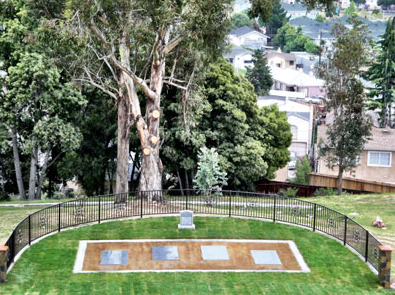 whose mother, aunt, and cousins died in Jonestown, has conducted a memorial service at Evergreen Cemetery in Oakland, California [Image at right] every November 18 since 1979. Norwood raised money to construct a memorial on the site, and in 2008 unveiled two enormous granite blocks with the names of some, but not all, adults who had died in Jonestown. According to Ron Haulman, manager of the cemetery, however, the fragile hillside could not support the size or weight of the monuments (Haulman 2011). In 2010, frustrated with the slow pace of the memorialization process, three relatives of Jonestown victims (Jim Jones Jr., John Cobb, and Fielding McGehee) created the Jonestown Memorial Fund and signed a contract with Evergreen Cemetery, agreeing to create a monument consistent with environmental constraints at the hillside (McGehee 2011). In 2011 the three raised $20,000 in three weeks from 120 former Temple members, relatives, scholars, and others. In May 2011, Norwood sued to halt installation of the memorial, claiming that she had a prior claim with the cemetery. The court ruled against her, given that by the time of her suit, the new memorial (four granite plaques that list the names of all who died) was already in place.
whose mother, aunt, and cousins died in Jonestown, has conducted a memorial service at Evergreen Cemetery in Oakland, California [Image at right] every November 18 since 1979. Norwood raised money to construct a memorial on the site, and in 2008 unveiled two enormous granite blocks with the names of some, but not all, adults who had died in Jonestown. According to Ron Haulman, manager of the cemetery, however, the fragile hillside could not support the size or weight of the monuments (Haulman 2011). In 2010, frustrated with the slow pace of the memorialization process, three relatives of Jonestown victims (Jim Jones Jr., John Cobb, and Fielding McGehee) created the Jonestown Memorial Fund and signed a contract with Evergreen Cemetery, agreeing to create a monument consistent with environmental constraints at the hillside (McGehee 2011). In 2011 the three raised $20,000 in three weeks from 120 former Temple members, relatives, scholars, and others. In May 2011, Norwood sued to halt installation of the memorial, claiming that she had a prior claim with the cemetery. The court ruled against her, given that by the time of her suit, the new memorial (four granite plaques that list the names of all who died) was already in place.
In addition to the claims of priority, Norwood objected to the inclusion of Jim Jones in the listing of names. Though aware of opposition and concern about including Jones’ name on the monument, the organizers of the Jonestown Memorial Fund nevertheless argued that the four-by-eight stones serve as an historical marker of the deaths of all who died on November 18, 1978. For this reason, Jim Jones’ name appears, listed alphabetically among all of the other persons named “Jones” who died that day.
7. What are the lessons of Jonestown? Jonestown and Jim Jones have entered American discourse as code for the perils of cults and cult leaders (Moore 2018b). In the conflict between anticultists and members of new religions in the 1980s, parents, deprogrammers, exit counselors, and psychiatrists pointed to Jonestown as the paradigm for all that could go wrong with unconventional religions (Shupe, Bromley, and Breschel 1989). As these authors wrote, “There was inestimable symbolic value for a countermovement in an event such as Jonestown” (1989:163-66). More than thirty years after the event, Jonestown and Jim Jones continue to symbolize evil, danger, and madness. Those who survived, however, consider it a failed experiment that had its strength in members’ commitment to racial equality and social justice.
In addition, the expression “drinking the Kool-Aid” has found a permanent place in American lexicon (Moore 2003). It is paradoxically used to mean either blindly jumping on the bandwagon, or being a team player, and finds its most frequent usage in the contexts of sports, business, and politics. As is the case with many idiomatic phrases, most of the people who now use the expression are too young to remember its origins in the events of Jonestown. Surviving members of Peoples Temple are horrified and offended by the expression, and the way it trivializes those who died (Carter 2003).
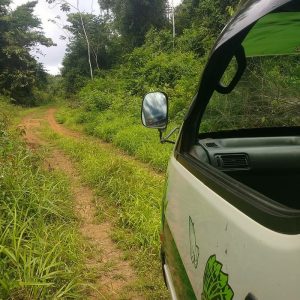
Debate about these and other issues continues, and will undoubtedly continue given the shocking nature of the deaths. [Image at right] Moreover, the fact that hundreds, if not thousands, of government documents still remain classified, suggests that the final story is yet to be written. These files may lend credence to conspiracy theories by exposing the extent of government foreknowledge of the deaths in Jonestown. Alternatively, the information they provide may not do much more than add details to parts of the story that remain vague. Whatever these documents reveal, the story will always remain incomplete and contested, and researchers present and future will continue to wrestle with the enigma that remains Jonestown.
IMAGES
Image #1: Jim Jones speaking from the pulpit of sanctuary in San Francisco, 1976. Photo courtesy The Jonestown Institute.
Image # 2: Peoples Temple Full Gospel Church in Indianapolis, Indiana. Photo courtesy Duane M. Green, 2012, The Jonestown Institute..
Image # 3: Jonestown pioneers visited by Jim Jones, 1974. Photo courtesy Doxsee Phares Collection, The Jonestown Institute.
Image #4: Aerial shot of Jonestown, 1978. Photo courtesy The Jonestown Institute.
Image # 5: John Victor Stoen, the object of a custody battle between Jim Jones and Grace and Timothy Stoen. Photo courtesy California Historical Society.
Image #6: Congressman Leo J. Ryan, who was assassinated on 18 November 1978 by residents of Jonestown. Four other people died in the attack. Photo courtesy California Historical Society.
Image #7: Aerial view of Jonestown with bodies somewhat visible. Photo courtesy The Jonestown Institute.
Image #8: U.S. military personnel engaged in gathering remains in Jonestown. Photo courtesy Preston Jones, John Brown University.
Image # 9: Idealized portrait of Jim Jones standing with children of different races. This was considered the “Rainbow Family,” a goal of Peoples Temple members. Photo courtesy The Jonestown Institute.
Image #10: Children and teenagers enter the sanctuary of San Francisco church, 1974. Photo courtesy The Jonestown Institute.
Image # 11: Agricultural worker in Jonestown. Photo courtesy California Historical Society.
Image #12: Four granite plaques installed at Evergreen Cemetery in Oakland, California, in 2011. There was controversy about including the name of Jim Jones on the plaques. Photo courtesy John Cobb and Regina Hamilton.
Image #13: The road to Jonestown in 2018. Photo courtesy Rikke Wettendorf.
REFERENCES
Alternative Considerations of Jonestown and Peoples Temple. Accessed from http://jonestown.sdsu.edu on 4 June 2012.
Anthony, Dick, Thomas Robbins, and Steven Barrie-Anthony. 2011. “Reciprocal Totalism: The Toxic Interdependence of Anticult and Cult Violence.” Pp. 63-92 in Violence and New Religious Movements, edited by James R. Lewis. New York: Oxford University Press.
“Autopsies.” 1979. Alternative Considerations of Jonestown and Peoples Temple. Accessed from http://jonestown.sdsu.edu/wp-content/uploads/2013/10/JimJones.pdf on 4 June 2012.
Beck, Don. 2005. “The Healings of Jim Jones.” The Jonestown Report 7. Accessed from http://jonestown.sdsu.edu/?page_id=32369 on 7 November 2014.
Bellefountaine, Michael. 2006. “The Limits of Language.” The Jonestown Report 8. Accessed from http://jonestown.sdsu.edu/?page_id=31975 on 7 November 2014.
Bellefountaine, Michael, with Dora Bellefountaine. 2011. A Lavender Look at the Temple: A Gay Perspective of the Peoples Temple. Bloomington, IN: Indiana University Press.
Carter, Mike. 2003. “Drinking the Kool-Aid.” The Jonestown Report, August 5. Alternative Considerations of Jonestown and Peoples Temple. Accessed from https://jonestown.sdsu.edu/?page_id=16987 on 7 May 2021.
Cartmell, Mike. 2006. “ Temple Healings; Magical Thinking.” Alternative Considerations of Jonestown and Peoples Temple. Accessed from http://jonestown.sdsu.edu/?page_id=31911 on 4 June 2012.
Chidester, David. 1988 (reissued 2004). Salvation and Suicide: An Interpretation of Jim Jones, the Peoples Temple, and Jonestown. Bloomington, IN: Indiana University Press.
Concerned Relatives. 1978. “Accusation of Human Rights Violations made by Concerned Relatives, 11 April 1978. Accessed from http://jonestown.sdsu.edu/?page_id=13080 on 7 November 2014.
Hall, John R. 1995. “Public Narratives and the Apocalyptic Sect: From Jonestown to Mt. Carmel.” Pp. 205-35 in Armageddon in Waco: Critical Perspectives on the Branch Davidian Conflict, edited by Stuart A. Wright. Chicago: University of Chicago Press.
Hall, John R. 1987 (reissued 2004). Gone From the Promised Land: Jonestown in American Cultural History. New Brunswick: Transaction Books.
Harrison, F. Milmon. 2004. “Jim Jones and Black Worship Traditions.” Pp. 123-38 in Peoples Temple and Black Religion in America, edited by Rebecca Moore, Anthony B. Pinn, and Mary Sawyer. Bloomington: Indiana University Press.
Haulman, Ronald. 2011. “Declaration of Ronald Haulman in Opposition to Application for a Temporary Restraining Order.” Alternative Considerations of Jonestown and Peoples Temple. Accessed from http://jonestown.sdsu.edu/wp-content/uploads/2013/10/Norwood5a.pdf on 4 June 2012.
Helander, Henri. 2020. “Alternative History (Conspiracy) Theory Index.” Alternative Considerations of Jonestown and Peoples Temple. Accessed from https://jonestown.sdsu.edu/?page_id=95357 on 12 March 2020.
Layton, Deborah. 1998. Seductive Poison: A Jonestown Survivor’s Story of Life and Death in the Peoples Temple. New York: Anchor Books.
Levi, Ken. 1982. Violence and Religious Commitment: Implications of Jim Jones’s Peoples Temple Movement. University Park: The Pennsylvania State University Press.
Maaga, McCormick Mary. 1998. Hearing the Voices of Jonestown. Syracuse: Syracuse University Press.
McGehee, Fielding M. III. 2011. “The Campaign for a New Memorial: A Brief History.” The Jonestown Report 11. Accessed from http://jonestown.sdsu.edu/?page_id=34364 on 7 November 2014.
“Military Response to Jonestown.” 2020. Siloam Springs, AR: John Brown University, at https://www.militaryresponsetojonestown.com/ on 20 March 2020.
Mills, Jeannie. 1979. Six Years With God: Life Inside Rev. Jim Jones’s Peoples Temple. New York: A & W Publishers.
Moore, Rebecca. 2018a. “Examinations by Dr. Leslie Mootoo.” Alternative Considerations of Jonestown and Peoples Temple. Accessed from https://jonestown.sdsu.edu/?page_id=83848 on 12 March 2020.
Moore, Rebecca. 2018b. “Godwin’s Law and Jones’ Corollary: The Problem of Using Extremes to Make Predictions.” Nova Religio 22:145–54.
Moore, Rebecca. 2011. “Narratives of Persecution, Suffering, and Martyrdom: Violence in Peoples Temple and Jonestown.” Pp. 95-11 in Violence and New Religious Movements, edited by James R. Lewis. New York: Oxford University Press.
Moore, Rebecca. 2009 [2018]. Understanding Jonestown and Peoples Temple. Westport, CT: Praeger.
Moore, Rebecca. 2006. “The Sacrament of Suicide.” The Jonestown Report 8. Accessed from http://jonestown.sdsu.edu/?page_id=31985 on 7 November 2014.
Moore, Rebecca. 2005. “Reconstructing Reality: Conspiracy Theories About Jonestown.” Pp. 61-78 in Controversial New Religions, edited by James R. Lewis and Jesper Aagaard Petersen. New York: Oxford University Press. Also available at http://jonestown.sdsu.edu/?page_id=16582.
Moore, Rebecca. 2003. “Drinking the Kool-Aid: The Cultural Transformation of a Tragedy.” Nova Religio 7: 92-100. Also available at http://jonestown.sdsu.edu/?page_id=16584.
Moore, Rebecca. 1986. The Jonestown Letters: Correspondence of the Moore Family 1970-1985. Lewiston, NY: Edwin Mellen Press.
Moore, Rebecca. 1985. A Sympathetic History of Jonestown: The Moore Family Involvement in Peoples Temple. Lewiston, NY: Edwin Mellen Press.
Moton, Pam. 1978. “Exhibit A to Concerned Relatives Accusation of 11 April 1978, Letter to Members of Congress, 14 March 1978.“ Alternative Considerations of Jonestown and Peoples Temple. Accessed from http://jonestown.sdsu.edu/?page_id=13084 on 4 June 2012.
“The NOIWON Notation.” 1978. Alternative Considerations of Jonestown and Peoples Temple. Accessed from http://jonestown.sdsu.edu/?page_id=13678 on 4 June 2012.
Reiterman, Tim, with John Jacobs. 1982. Raven: The Untold Story of The Rev. Jim Jones and His People. New York: E.P. Dutton.
Roller, Edith. “Journals.” Alternative Consideration of Jonestown and Peoples Temple. Accessed from http://jonestown.sdsu.edu/?page_id=35667 on 4 June 2012.
Rose, Steve. 1979. Jesus and Jim Jones: Behind Jonestown. New York: Pilgrim Press.
Rosenbaum, Ron. 1998. Explaining Hitler: The Search for the Origins of His Evil. New York: Random House.
Sawyer, R. Mary. 2004. “The Church in Peoples Temple.” Pp. 166-93 in Peoples Temple and Black Religion in America, edited by Rebecca Moore, Anthony B. Pinn, and Mary Sawyer. Bloomington: Indiana University Press.
Scheeres, Julia. 2011. A Thousand Lives: The Untold Story of Hope, Deception, and Survival at Jonestown. New York: Free Press.
Shupe, Anson, David Bromley, and Edward Breschel. 1989. “The Peoples Temple, the Apocalypse at Jonestown, and the Anti-Cult Movement.” Pp. 153-71 in New Religious Movements, Mass Suicide, and Peoples Temple: Scholarly Perspectives on a Tragedy, edited by Rebecca Moore and Fielding McGehee III. Lewiston, NY: Edwin Mellen Press.
Smith, Archie Jr. 2004. “An Interpretation of Peoples Temple and Jonestown: Implications for the Black Church.” Pp. 47-56 in Peoples Temple and Black Religion in America, edited by Rebecca Moore, Anthony B. Pinn, and Mary Sawyer. Bloomington: Indiana University Press.
Stephenson, Denice, ed. 2005. Dear People: Remembering Jonestown. San Francisco and Berkeley: California Historical Society Press and Heyday Books.
U.S. Committee on Foreign Affairs. 1979. “The Assassination of Representative Leo J. Ryan and the Jonestown, Guyana Tragedy.” U.S. House of Representatives, 96th Congress, First Session. Washington, D.C.: Government Printing Office.
“Was It Murder or Suicide?” 2006. The Jonestown Report 8. Accessed from http://jonestown.sdsu.edu/?page_id=31981 on 7 November 2014.
Wessinger, Catherine. 2000. How the Millennium Comes Violently. New York: Seven Bridges Press.
SUPPLEMENTARY RESOURCES
Alternative Considerations of Jonestown and Peoples Temple is a comprehensive digital library of primary source literature, first-person accounts, and scholarly analyses. It currently provides live streaming of more than 925 audiotapes made by the group during its twenty-five year existence, as well as photographs taken by group members. Approximately 500 tapes are currently available online, along with transcripts and summaries. Founded in 1998 at the University of North Dakota to coincide with the twentieth anniversary of the deaths in Jonestown, the website moved to San Diego State University in 1999, where it has been housed ever since at. The SDSU Library and Special Collections currently manages Alternative Considerations, one of the largest digital archives of a new religion in existence. The site memorializes those who died in the tragedy; documents the numerous government investigations into Peoples Temple and Jonestown (such as more than 70,000 pages from the FBI, including records from its investigation as well as its collection of Temple documents, and 5,000 from the U.S. State Department); and presents Peoples Temple and its members in their own words through articles, tapes, letters, photographs and other items. The site also conveys ongoing news regarding research and events relating to the group.
Bibliography and Audiotape Resources:
A comprehensive bibliography of resources on Peoples Temple and Jonestown can be found here.
Audiotapes recovered in Jonestown, 300 of which are streaming live, can be found here: http://jonestown.sdsu.edu/?page_id=27280
Items Referenced in the profile: The following items, referenced in the above article, can be found on the Alternative Considerations website.
Lease signed between Government of Guyana and Peoples Temple, February 25, 1976. http://jonestown.sdsu.edu/?page_id=13131.
Affidavit signed by Tim Stoen stating that Jim Jones was the father of John Victor Stoen, February 6, 1972. http://jonestown.sdsu.edu/?page_id=13836
Transcript and audiostreaming of Tape Q 042 (the so-called Death Tape), made November 18, 1978. http://jonestown.sdsu.edu/?page_id=29084.
Text of “The Letter Killeth.” http://jonestown.sdsu.edu/?page_id=14111
Text of the “Gang of Eight Letter.” http://jonestown.sdsu.edu/?page_id=14075.
Publication Date:
22 June 2012
Update: 9 May 2021
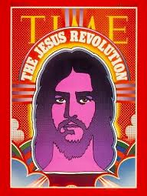 (Lofland and Richardson 1984:32-39); among them were Shiloh Youth Revival Centers, at first known as the “House of Miracles,” and later as “Shiloh” to its adherents (Di Sabatino 1994; Goldman 1995; Isaacson 1995; Richardson et al. 1979; Stewart 1992; Taslimi et al. 1991). Shiloh was one of the largest, if not the largest, in membership of the North American Christian (or any other religious) communes established during and shortly after the 1960’s hippie era. Internal estimates of those who passed through Shiloh’s 180 communal portals ranged as high as 100,000; the group claimed about 1,500 members in 37 communes and 20 churches or “fellowships” in early 1978. Bodenhausen, drawing on Shiloh’s internal records, reported 11,269 visits and 168 conversions during a five-week period in 1977. Shiloh embodied a hippie-youth vanguard of the post-war shift to Evangelical Protestantism in mid-to-late twentieth century North America.
(Lofland and Richardson 1984:32-39); among them were Shiloh Youth Revival Centers, at first known as the “House of Miracles,” and later as “Shiloh” to its adherents (Di Sabatino 1994; Goldman 1995; Isaacson 1995; Richardson et al. 1979; Stewart 1992; Taslimi et al. 1991). Shiloh was one of the largest, if not the largest, in membership of the North American Christian (or any other religious) communes established during and shortly after the 1960’s hippie era. Internal estimates of those who passed through Shiloh’s 180 communal portals ranged as high as 100,000; the group claimed about 1,500 members in 37 communes and 20 churches or “fellowships” in early 1978. Bodenhausen, drawing on Shiloh’s internal records, reported 11,269 visits and 168 conversions during a five-week period in 1977. Shiloh embodied a hippie-youth vanguard of the post-war shift to Evangelical Protestantism in mid-to-late twentieth century North America.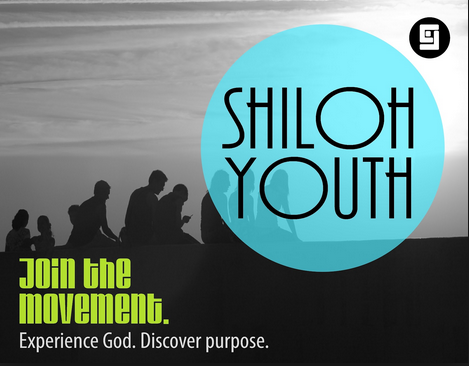 resulted in renaming the movement “Shiloh,” by establishing a large rural commune in Dexter, Oregon, and by working with leaders of other Pentecostal denominations (the Open Bible Standard churches, and Faith Center, a small Foursquare church in Eugene). In 1971, sociologist James T. Richardson lead a team of graduate students to Shiloh’s “Berry Farm” in Cornelius, Oregon to study the group, efforts that continued in a series of contacts over the 1970s and became fully realized in Organized Miracles (1979). One unanticipated consequence was that an article published by his team in Psychology Today stirred a wave of seekers who wrote to the sociologists asking how to join.
resulted in renaming the movement “Shiloh,” by establishing a large rural commune in Dexter, Oregon, and by working with leaders of other Pentecostal denominations (the Open Bible Standard churches, and Faith Center, a small Foursquare church in Eugene). In 1971, sociologist James T. Richardson lead a team of graduate students to Shiloh’s “Berry Farm” in Cornelius, Oregon to study the group, efforts that continued in a series of contacts over the 1970s and became fully realized in Organized Miracles (1979). One unanticipated consequence was that an article published by his team in Psychology Today stirred a wave of seekers who wrote to the sociologists asking how to join. so gifted, leader teams, and Quaker-like testimony-sharing-and-prayer meetings, to “Bible Studies” led by internally-credentialed authoritarian leaders. The original leadership consisted of four married couples: John and Jacquelyn Higgins, Lonnie and Connie Frisbee, Randy and Sue Morich, Stan and Gayle Joy (Higgins 1973; 1974a; 1974b). The Frisbees, Morichs, and Stan Joy left Shiloh by 1970; Jacquelyn Higgins left in the mid-1970s. Only Gayle Joy and John Higgins continued, and both remarried. This allowed Higgins to consolidate his authority.
so gifted, leader teams, and Quaker-like testimony-sharing-and-prayer meetings, to “Bible Studies” led by internally-credentialed authoritarian leaders. The original leadership consisted of four married couples: John and Jacquelyn Higgins, Lonnie and Connie Frisbee, Randy and Sue Morich, Stan and Gayle Joy (Higgins 1973; 1974a; 1974b). The Frisbees, Morichs, and Stan Joy left Shiloh by 1970; Jacquelyn Higgins left in the mid-1970s. Only Gayle Joy and John Higgins continued, and both remarried. This allowed Higgins to consolidate his authority.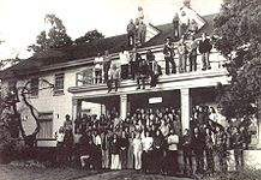 challenge. Secondary to this was the provision of nutritious food. Twenty-something Shiloh leaders found themselves thrust into the role of caring for large numbers of people. In response, Shiloh developed its Shiloh Christian Communal Cooking Book with recipes for five, 25, and 50 servings, organized dumpster diving and produce runs to recycle food, applied for USDA surplus food, and planted community gardens. Following a “prophetic” understanding that “agriculture was to be the foundation of the ministry,” Shiloh purchased an orchard, pastures, a goat dairy and livestock; leased a commercial berry farm; ran a commercial fishing boat; and developed a cannery to provide both income and food to distribute throughout its communal system.
challenge. Secondary to this was the provision of nutritious food. Twenty-something Shiloh leaders found themselves thrust into the role of caring for large numbers of people. In response, Shiloh developed its Shiloh Christian Communal Cooking Book with recipes for five, 25, and 50 servings, organized dumpster diving and produce runs to recycle food, applied for USDA surplus food, and planted community gardens. Following a “prophetic” understanding that “agriculture was to be the foundation of the ministry,” Shiloh purchased an orchard, pastures, a goat dairy and livestock; leased a commercial berry farm; ran a commercial fishing boat; and developed a cannery to provide both income and food to distribute throughout its communal system.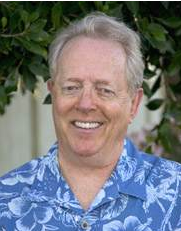 leading Shiloh in an unacceptable direction. However, the 1978 coup d’état that followed did derail the movement with the result that hundreds of communards suddenly had to find their way in the world.
leading Shiloh in an unacceptable direction. However, the 1978 coup d’état that followed did derail the movement with the result that hundreds of communards suddenly had to find their way in the world.

 affiliate with the Disciples of Christ (Christian Church), and in 1960 the Peoples Temple Christian Church Full Gospel [Image at right] became an official member of the denomination (Moore 2009:13).
affiliate with the Disciples of Christ (Christian Church), and in 1960 the Peoples Temple Christian Church Full Gospel [Image at right] became an official member of the denomination (Moore 2009:13). Venezuelan border. By the time the Temple signed an official lease for the land in 1976, pioneers from the group had already spent two years of back-breaking labor [Image at right] to clear jungle in Guyana in order to establish what they called the Peoples Temple Agricultural Project. Guyana, a multiracial state and the only English-speaking country in South America, declared itself to be a cooperative socialist republic. Its black minority government welcomed the prospect of serving as a refuge for Americans fleeing a racist and oppressive society. Moreover, having a large group of ex-patriate Americans so close to the border with Venezuela assured U.S. interest in the area under dispute (Moore 2009:42). The Peoples Temple Agricultural Project grew slowly at first, housing only about 50 people as late as the first months of 1977, but it expanded to more than 400 residents by April, and to 1,000 by the end of the year (Moore 2009:44).
Venezuelan border. By the time the Temple signed an official lease for the land in 1976, pioneers from the group had already spent two years of back-breaking labor [Image at right] to clear jungle in Guyana in order to establish what they called the Peoples Temple Agricultural Project. Guyana, a multiracial state and the only English-speaking country in South America, declared itself to be a cooperative socialist republic. Its black minority government welcomed the prospect of serving as a refuge for Americans fleeing a racist and oppressive society. Moreover, having a large group of ex-patriate Americans so close to the border with Venezuela assured U.S. interest in the area under dispute (Moore 2009:42). The Peoples Temple Agricultural Project grew slowly at first, housing only about 50 people as late as the first months of 1977, but it expanded to more than 400 residents by April, and to 1,000 by the end of the year (Moore 2009:44).

 Congressman Leo J. Ryan. [Image at right] A constituent, Sammy Houston, claimed that his son Robert had been murdered by Temple members. (There is no evidence to substantiate his claim, which was investigated by the police at the time of Robert’s death, and was re-examined after events in Jonestown.)
Congressman Leo J. Ryan. [Image at right] A constituent, Sammy Houston, claimed that his son Robert had been murdered by Temple members. (There is no evidence to substantiate his claim, which was investigated by the police at the time of Robert’s death, and was re-examined after events in Jonestown.) her three children and herself in the bathroom of the Georgetown headquarters. The final death toll in Guyana that day was 918: 909 in Jonestown; five at the Port Kaituma airstrip, and four at the Temple’s house in Georgetown. [Image at right]
her three children and herself in the bathroom of the Georgetown headquarters. The final death toll in Guyana that day was 918: 909 in Jonestown; five at the Port Kaituma airstrip, and four at the Temple’s house in Georgetown. [Image at right] the bodies in Jonestown. A U.S. Army Graves Registration team bagged the remains, which the U.S. Air Force then transported to Dover Air Force Base for identification by the Federal Bureau of Investigation. [Image at right] (Interviews with participants in the bodylift are available at “Military Response to Jonestown” 2020). Routine embalming of all bodies began almost immediately, but one result was that vital forensic evidence was destroyed, which prevented accurate determination of death for seven individuals autopsied by the Armed Forces Institute of Pathology. Relatives claimed approximately one half of the number of bodies, while about 400 bodies remained unidentified or unclaimed. The majority of the unidentified were children. An interfaith group in San Francisco found a cemetery in Oakland, California willing to bury these bodies, after facing rejection by a number of other cemeteries afraid of criticism. In May, 2011 four memorial plaques were placed at the burial site in Evergreen Cemetery, listing the names of all those who died on November 18, 1978.
the bodies in Jonestown. A U.S. Army Graves Registration team bagged the remains, which the U.S. Air Force then transported to Dover Air Force Base for identification by the Federal Bureau of Investigation. [Image at right] (Interviews with participants in the bodylift are available at “Military Response to Jonestown” 2020). Routine embalming of all bodies began almost immediately, but one result was that vital forensic evidence was destroyed, which prevented accurate determination of death for seven individuals autopsied by the Armed Forces Institute of Pathology. Relatives claimed approximately one half of the number of bodies, while about 400 bodies remained unidentified or unclaimed. The majority of the unidentified were children. An interfaith group in San Francisco found a cemetery in Oakland, California willing to bury these bodies, after facing rejection by a number of other cemeteries afraid of criticism. In May, 2011 four memorial plaques were placed at the burial site in Evergreen Cemetery, listing the names of all those who died on November 18, 1978. traditional Christianity did not exist, but a genuine God, referred to as Principle or Divine Socialism, did exist in the person of Jim Jones. [Image at right] If God is Love, and Love is Socialism, then humans must live socialistically to participate in God. Moreover, this allowed for personal deification, as Jones quoted John 10:34: “ye all are gods” (Chidester 1988:53). Thus, members of Peoples Temple practiced what they called “apostolic socialism,” that is, the socialism of the early Christian community described in Acts 2:45 and 4:34-35. “No one can privately own the land. No one can privately own the air. It must be held in common. So then, that is love, that is God, Socialism” (Chidester 1988:57, quoting Jones on Tape Q 967).
traditional Christianity did not exist, but a genuine God, referred to as Principle or Divine Socialism, did exist in the person of Jim Jones. [Image at right] If God is Love, and Love is Socialism, then humans must live socialistically to participate in God. Moreover, this allowed for personal deification, as Jones quoted John 10:34: “ye all are gods” (Chidester 1988:53). Thus, members of Peoples Temple practiced what they called “apostolic socialism,” that is, the socialism of the early Christian community described in Acts 2:45 and 4:34-35. “No one can privately own the land. No one can privately own the air. It must be held in common. So then, that is love, that is God, Socialism” (Chidester 1988:57, quoting Jones on Tape Q 967). “corrective fellowship” meetings were held in which church members offered self-criticism. But catharsis as a regular part of Temple practice took root in Redwood Valley. [Image at right] Catharsis sessions required public confession and communal punishment for transgressions against the community and its members (Moore 2009:32-33). For example, if a teenager was accused of being rude to a senior citizen, the congregation would hear the evidence and vote on the teenager’s innocence or guilt, and on the punishment to be received. The penalty could be a severe spanking administered by one of the seniors. When Jones introduced the “Board of Education,” a one-by-four inch board two and a half feet long, he assigned a large woman to administer the beatings: “She was strong and knew how to whip hard,” according to Mills (1979). Adults who transgressed were punished by being forced to box with other Temple members. A diary kept by Temple member Edith Roller, for example, reported a boxing match between a young man accused of sexism, and a young woman. The woman knocked out the man, to the delight of the crowd in attendance (Moore 2009:32-33).
“corrective fellowship” meetings were held in which church members offered self-criticism. But catharsis as a regular part of Temple practice took root in Redwood Valley. [Image at right] Catharsis sessions required public confession and communal punishment for transgressions against the community and its members (Moore 2009:32-33). For example, if a teenager was accused of being rude to a senior citizen, the congregation would hear the evidence and vote on the teenager’s innocence or guilt, and on the punishment to be received. The penalty could be a severe spanking administered by one of the seniors. When Jones introduced the “Board of Education,” a one-by-four inch board two and a half feet long, he assigned a large woman to administer the beatings: “She was strong and knew how to whip hard,” according to Mills (1979). Adults who transgressed were punished by being forced to box with other Temple members. A diary kept by Temple member Edith Roller, for example, reported a boxing match between a young man accused of sexism, and a young woman. The woman knocked out the man, to the delight of the crowd in attendance (Moore 2009:32-33). Violations,” that incoming and outgoing mail was censored; that travel was restricted; that family members could not visit relatives in Jonestown; and that residents put their best face forward for visitors. [Image at right] Situated in the middle of dense jungle, with only two villages accessible by road (Port Kaituma six miles away and Matthews Ridge 30 miles distant) and connected only by air or river travel to the rest of the world, Jonestown was an encapsulated community, almost completely isolated from contact with outsiders. At the same time, Jonestown did not acquire its totalistic profile apart from the agitation of its “cultural opponents” (Hall 1995). As Hall observes, anticult activists played a role in the outcomes in Jonestown and at Mt. Carmel. In their article that analyzes the endogenous (internal) factors leading to violence in new religious movements and the exogenous (external) factors, Anthony, Robbins, and Barrie-Anthony (2011) describe a “toxic interdependence” of “anticult and cult violence,” and suggest that “some groups may be so highly totalistic that they are very vulnerable to [a] triggering effect,” that is, acting out totalistic projections from the outside world (2011:82). In other words, conditions in Jonestown may have declined in response to the level of threat residents believed to exist.
Violations,” that incoming and outgoing mail was censored; that travel was restricted; that family members could not visit relatives in Jonestown; and that residents put their best face forward for visitors. [Image at right] Situated in the middle of dense jungle, with only two villages accessible by road (Port Kaituma six miles away and Matthews Ridge 30 miles distant) and connected only by air or river travel to the rest of the world, Jonestown was an encapsulated community, almost completely isolated from contact with outsiders. At the same time, Jonestown did not acquire its totalistic profile apart from the agitation of its “cultural opponents” (Hall 1995). As Hall observes, anticult activists played a role in the outcomes in Jonestown and at Mt. Carmel. In their article that analyzes the endogenous (internal) factors leading to violence in new religious movements and the exogenous (external) factors, Anthony, Robbins, and Barrie-Anthony (2011) describe a “toxic interdependence” of “anticult and cult violence,” and suggest that “some groups may be so highly totalistic that they are very vulnerable to [a] triggering effect,” that is, acting out totalistic projections from the outside world (2011:82). In other words, conditions in Jonestown may have declined in response to the level of threat residents believed to exist. whose mother, aunt, and cousins died in Jonestown, has conducted a memorial service at Evergreen Cemetery in Oakland, California [Image at right] every November 18 since 1979. Norwood raised money to construct a memorial on the site, and in 2008 unveiled two enormous granite blocks with the names of some, but not all, adults who had died in Jonestown. According to Ron Haulman, manager of the cemetery, however, the fragile hillside could not support the size or weight of the monuments (Haulman 2011). In 2010, frustrated with the slow pace of the memorialization process, three relatives of Jonestown victims (Jim Jones Jr., John Cobb, and Fielding McGehee) created the Jonestown Memorial Fund and signed a contract with Evergreen Cemetery, agreeing to create a monument consistent with environmental constraints at the hillside (McGehee 2011). In 2011 the three raised $20,000 in three weeks from 120 former Temple members, relatives, scholars, and others. In May 2011, Norwood sued to halt installation of the memorial, claiming that she had a prior claim with the cemetery. The court ruled against her, given that by the time of her suit, the new memorial (four granite plaques that list the names of all who died) was already in place.
whose mother, aunt, and cousins died in Jonestown, has conducted a memorial service at Evergreen Cemetery in Oakland, California [Image at right] every November 18 since 1979. Norwood raised money to construct a memorial on the site, and in 2008 unveiled two enormous granite blocks with the names of some, but not all, adults who had died in Jonestown. According to Ron Haulman, manager of the cemetery, however, the fragile hillside could not support the size or weight of the monuments (Haulman 2011). In 2010, frustrated with the slow pace of the memorialization process, three relatives of Jonestown victims (Jim Jones Jr., John Cobb, and Fielding McGehee) created the Jonestown Memorial Fund and signed a contract with Evergreen Cemetery, agreeing to create a monument consistent with environmental constraints at the hillside (McGehee 2011). In 2011 the three raised $20,000 in three weeks from 120 former Temple members, relatives, scholars, and others. In May 2011, Norwood sued to halt installation of the memorial, claiming that she had a prior claim with the cemetery. The court ruled against her, given that by the time of her suit, the new memorial (four granite plaques that list the names of all who died) was already in place.
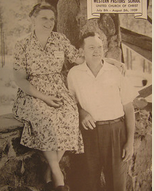 purpose of Koinonia Farm was to live out Christianity as they found it in the New Testament. Clarence Jordan called Koinonia Farm “a demonstration plot for the kingdom of God.” (Coble 1999) Soon after the founding of Koinonia Farm, the Englands returned to missionary work abroad. Although many people came and went, and a few families lived at Koinonia Farm for many years, the Jordans were the one consistent family from 1942 until 1969, when Clarence Jordan died (K’Meyer 1997).
purpose of Koinonia Farm was to live out Christianity as they found it in the New Testament. Clarence Jordan called Koinonia Farm “a demonstration plot for the kingdom of God.” (Coble 1999) Soon after the founding of Koinonia Farm, the Englands returned to missionary work abroad. Although many people came and went, and a few families lived at Koinonia Farm for many years, the Jordans were the one consistent family from 1942 until 1969, when Clarence Jordan died (K’Meyer 1997).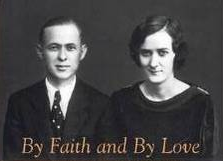 agriculture as an undergraduate, and he spent some of his time training local farmers to use better farming techniques. The local white community was antagonistic toward members of Koinonia Farm because black and white farm workers were treated equally. This included offering all workers the same wages and providing all workers a free noonday meal. (Coble 2002)
agriculture as an undergraduate, and he spent some of his time training local farmers to use better farming techniques. The local white community was antagonistic toward members of Koinonia Farm because black and white farm workers were treated equally. This included offering all workers the same wages and providing all workers a free noonday meal. (Coble 2002) many people who were part of the hippie movement visited Koinonia Farm, but few people were committed to living there. Jordan and Millard Fuller developed a plan to help the poor in their community own simple, safe homes. In 1969, while working on a sermon in his little writing shack, Jordan had a heart attack and died. After Jordan’s death, Millard Fuller built on their ideas and started Habitat for Humanity, which still has its headquarters in Americus, GA, near Koinonia Farm (Fuller and Scott 1980).
many people who were part of the hippie movement visited Koinonia Farm, but few people were committed to living there. Jordan and Millard Fuller developed a plan to help the poor in their community own simple, safe homes. In 1969, while working on a sermon in his little writing shack, Jordan had a heart attack and died. After Jordan’s death, Millard Fuller built on their ideas and started Habitat for Humanity, which still has its headquarters in Americus, GA, near Koinonia Farm (Fuller and Scott 1980).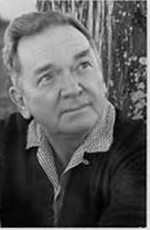 pacifist. He stated that he could not reconcile Jesus’ call to love our enemies with violence and war. This included personal violence as well as military violence, and that was very unusual for a Baptist during World War II. Secondly, Jordan believed in racial equality, which was also unusual during this time among Southern Baptists. Eventually the Jordans were disfellowshipped by the Rehobeth Baptist Church in the 1950s because the Jordans were working on racial reconciliation. Thirdly, Jordan read the Book of Acts and came to believe that Christians should live in communities that shared their goods and money in common. His practice of communal living was sometimes linked by his neighbors to communism, and this created more stress with the surrounding farming communities (Coble 2002).
pacifist. He stated that he could not reconcile Jesus’ call to love our enemies with violence and war. This included personal violence as well as military violence, and that was very unusual for a Baptist during World War II. Secondly, Jordan believed in racial equality, which was also unusual during this time among Southern Baptists. Eventually the Jordans were disfellowshipped by the Rehobeth Baptist Church in the 1950s because the Jordans were working on racial reconciliation. Thirdly, Jordan read the Book of Acts and came to believe that Christians should live in communities that shared their goods and money in common. His practice of communal living was sometimes linked by his neighbors to communism, and this created more stress with the surrounding farming communities (Coble 2002). of the New Testament (Jordan 1969, 1970). Considered to be a very loose paraphrase, these Cotton Patch versions placed Jesus in the twentieth century in rural Georgia. Jesus was born to Mary and Joe Davidson, he was baptized by John the Baptizer who wore blue jeans and leather jacket, and he was crucified in Atlanta. Jordan applied the teachings of Jesus to the racial conflict in the South. For example, the Good Samaritan was not a Samaritan, but a Black man. (Jordan 1969, 1970) After Jordan’s death, his Cotton Patch versions were used as the basis for a musical titled Cotton Patch Gospel , with music by Harry Chapin. The actor Tom Key played the central role. The musical was somewhat controversial because Jesus was lynched instead of crucified. ( Cotton Patch Gospel 1988).
of the New Testament (Jordan 1969, 1970). Considered to be a very loose paraphrase, these Cotton Patch versions placed Jesus in the twentieth century in rural Georgia. Jesus was born to Mary and Joe Davidson, he was baptized by John the Baptizer who wore blue jeans and leather jacket, and he was crucified in Atlanta. Jordan applied the teachings of Jesus to the racial conflict in the South. For example, the Good Samaritan was not a Samaritan, but a Black man. (Jordan 1969, 1970) After Jordan’s death, his Cotton Patch versions were used as the basis for a musical titled Cotton Patch Gospel , with music by Harry Chapin. The actor Tom Key played the central role. The musical was somewhat controversial because Jesus was lynched instead of crucified. ( Cotton Patch Gospel 1988).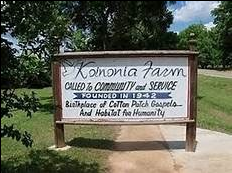 returned to Burma. Many utopian groups begin with a statement of commitment and fairly strict ideals, but Koinonia Farm had not begun that way. When Koinonia Farm developed more structure in the 1950s, the adults (both women and men) took turns being the official leaders, although Clarence Jordan remained the unofficial leader.
returned to Burma. Many utopian groups begin with a statement of commitment and fairly strict ideals, but Koinonia Farm had not begun that way. When Koinonia Farm developed more structure in the 1950s, the adults (both women and men) took turns being the official leaders, although Clarence Jordan remained the unofficial leader.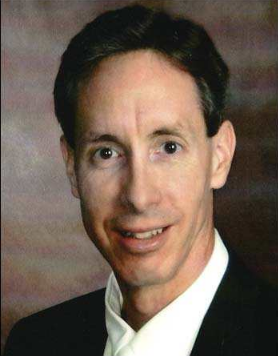 second son of Rulon’s fourth (and favorite) wife, Marilyn Steed. Rulon Jeffs left behind twenty-two wives, many of whom Warren married. Warren Jeffs’ leadership marked a significant shift in key FLDS practices and policies. Jeffs sought to solidify his power and authority in the new policy changes. He called for greater centralization of political and economic power in the person of the prophet. Though the FLDS had already moved to the “one man doctrine” of First Ward governance, Jeffs expanded this doctrine to a new level. Jeffs centralized finances and ordered business owners in the community to surrender ownership. He excommunicated long-term community leaders Dan and Louis Barlow and twenty other FLDS men who challenged the new rules and practices. Their property was seized and their wives and children reassigned to men loyal to Jeffs (Evans 2011). This culminated in a mass exodus of 700 members led by Winston Blackmore to another FLDS community in Bountiful in Canada (B.C.). Jeffs also ousted several hundred teenage boys (Lost Boys”) for violations of community rules. These self-aggrandizing actions created new divisions and conflicts within the FLDS. Critics charged Jeffs with blatant disregard for church law and its officers. It was in this contentious context that Jeffs set about to establish a new FLDS community in Texas.
second son of Rulon’s fourth (and favorite) wife, Marilyn Steed. Rulon Jeffs left behind twenty-two wives, many of whom Warren married. Warren Jeffs’ leadership marked a significant shift in key FLDS practices and policies. Jeffs sought to solidify his power and authority in the new policy changes. He called for greater centralization of political and economic power in the person of the prophet. Though the FLDS had already moved to the “one man doctrine” of First Ward governance, Jeffs expanded this doctrine to a new level. Jeffs centralized finances and ordered business owners in the community to surrender ownership. He excommunicated long-term community leaders Dan and Louis Barlow and twenty other FLDS men who challenged the new rules and practices. Their property was seized and their wives and children reassigned to men loyal to Jeffs (Evans 2011). This culminated in a mass exodus of 700 members led by Winston Blackmore to another FLDS community in Bountiful in Canada (B.C.). Jeffs also ousted several hundred teenage boys (Lost Boys”) for violations of community rules. These self-aggrandizing actions created new divisions and conflicts within the FLDS. Critics charged Jeffs with blatant disregard for church law and its officers. It was in this contentious context that Jeffs set about to establish a new FLDS community in Texas.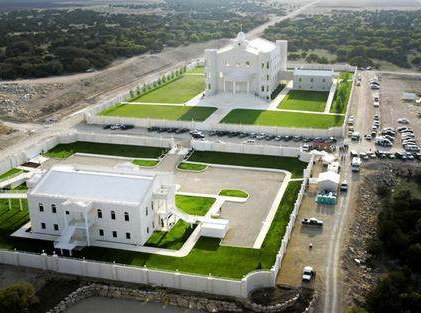
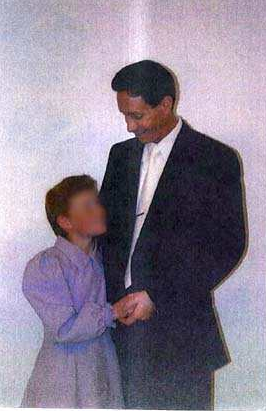 In June, 2005, Jeffs was charged with sexual assault of a minor and with conspiracy to commit sexual misconduct with a minor for allegedly arranging a marriage between a fourteen year-old girl and her nineteen year-old first cousin. Jeffs became a fugitive to avoid arrest. Photos were later released showing Jeffs celebrating his marriage to an underage girl who was only twelve. In late 2005, Jeffs was put on the FBI’s most wanted list. Jeffs was captured in Nevada in August, 2006. He stood trial in St. George, Utah in 2007 and was found guilty on two counts of being an accomplice to rape. He was sentenced to ten years in prison. But the Utah Supreme Court later overturned the ruling and ordered a new trial due to faulty instructions given to jurors. Jeffs was still in custody when the state of Texas launched a raid on the YFZ property the following year.
In June, 2005, Jeffs was charged with sexual assault of a minor and with conspiracy to commit sexual misconduct with a minor for allegedly arranging a marriage between a fourteen year-old girl and her nineteen year-old first cousin. Jeffs became a fugitive to avoid arrest. Photos were later released showing Jeffs celebrating his marriage to an underage girl who was only twelve. In late 2005, Jeffs was put on the FBI’s most wanted list. Jeffs was captured in Nevada in August, 2006. He stood trial in St. George, Utah in 2007 and was found guilty on two counts of being an accomplice to rape. He was sentenced to ten years in prison. But the Utah Supreme Court later overturned the ruling and ordered a new trial due to faulty instructions given to jurors. Jeffs was still in custody when the state of Texas launched a raid on the YFZ property the following year.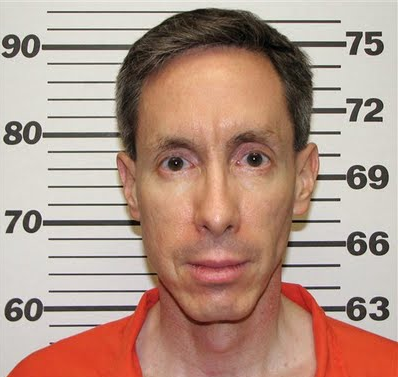 over time: whether there will arise competing prophets to challenge Jeffs’ authority, whether new factions will emerge, or if out of practical necessity those who administer the day-to-day operations of the church become de facto leaders who develop their own authority. Jeffs has imposed even stricter and more rigid requirements on members since his incarceration, dissolving marriages, declaring a moratorium on sex, and attempting to purge the doubters (Dobner 2012; Hollenhorst 2011). He has also issued a series of revelations declaring God’s judgment on the nation for imprisoning him, warning of earthquakes, volcanoes, fires, storms, and floods. But it seems highly unlikely that Jeffs will ever be released from prison, given his life sentence plus twenty years. This permanent sequestration may empower some FLDS members to accept future changes in leadership.
over time: whether there will arise competing prophets to challenge Jeffs’ authority, whether new factions will emerge, or if out of practical necessity those who administer the day-to-day operations of the church become de facto leaders who develop their own authority. Jeffs has imposed even stricter and more rigid requirements on members since his incarceration, dissolving marriages, declaring a moratorium on sex, and attempting to purge the doubters (Dobner 2012; Hollenhorst 2011). He has also issued a series of revelations declaring God’s judgment on the nation for imprisoning him, warning of earthquakes, volcanoes, fires, storms, and floods. But it seems highly unlikely that Jeffs will ever be released from prison, given his life sentence plus twenty years. This permanent sequestration may empower some FLDS members to accept future changes in leadership.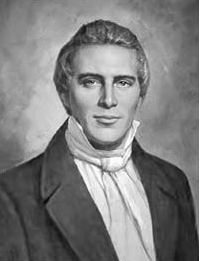 of a plurality of wives to a select group of his followers in the 1840s. By the time of his death in 1844, according to scholar George D. Smith’s analysis, at least 196 men and 717 women had entered the practice privately (Smith 2008:573-639). His vision for the “new and everlasting covenant of marriage” became part of LDS scripture on July 12, 1843 with the 132 nd section of the Doctrine and Covenants. He positioned the uniquely Mormon interpretation of the significance of marriage, in the restoration of the model of Abraham, Isaac and Jacob. According to the revelation, “Celestial marriage” was marriage for time and eternity. Men with priesthood authority had the power to seal men and women for eternity. Essential for the highest level of salvation in what Smith described as the “Celestial” kingdom, Smith interpreted plural marriage “as a uniquely exalted form of ‘celestial marriage’—the ‘further order’ of the patriarchal order of marriage mentioned in Doctrine of Covenants” (Bradley 1993:2)
of a plurality of wives to a select group of his followers in the 1840s. By the time of his death in 1844, according to scholar George D. Smith’s analysis, at least 196 men and 717 women had entered the practice privately (Smith 2008:573-639). His vision for the “new and everlasting covenant of marriage” became part of LDS scripture on July 12, 1843 with the 132 nd section of the Doctrine and Covenants. He positioned the uniquely Mormon interpretation of the significance of marriage, in the restoration of the model of Abraham, Isaac and Jacob. According to the revelation, “Celestial marriage” was marriage for time and eternity. Men with priesthood authority had the power to seal men and women for eternity. Essential for the highest level of salvation in what Smith described as the “Celestial” kingdom, Smith interpreted plural marriage “as a uniquely exalted form of ‘celestial marriage’—the ‘further order’ of the patriarchal order of marriage mentioned in Doctrine of Covenants” (Bradley 1993:2)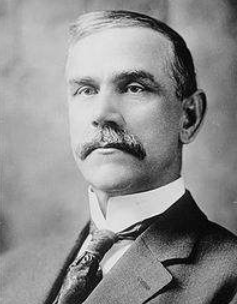 again as a national issue. Smoot was not himself a polygamist, but the issue was whether he would be loyal to the laws of the United States or those of his church. In response to this new pressure, President Joseph F. Smith in April conference, 1904 announced the “Second Manifesto” that added the threat of excommunication to those who failed to follow the prohibition against plural marriages. The document decried allegations that new marriages had occurred “with the sanction, consent or knowledge of the Church” (Allen and Leonard 1976:443).
again as a national issue. Smoot was not himself a polygamist, but the issue was whether he would be loyal to the laws of the United States or those of his church. In response to this new pressure, President Joseph F. Smith in April conference, 1904 announced the “Second Manifesto” that added the threat of excommunication to those who failed to follow the prohibition against plural marriages. The document decried allegations that new marriages had occurred “with the sanction, consent or knowledge of the Church” (Allen and Leonard 1976:443).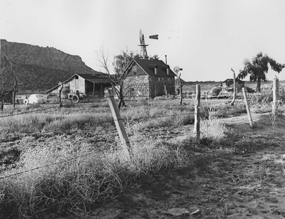 state rolled over the rocky roadbeds leading into town, Governor Howard Pyle justified the raid over the radio, announcing his fight against “insurrection within [ Arizona’s] own borders,” with the intent “to protect the lives and future of 263 children . . . . the product and the victims of the foulest conspiracy . . . . a community dedicated to the production of white slaves. . . . degrading slavery.” He elaborated further on this theme:
state rolled over the rocky roadbeds leading into town, Governor Howard Pyle justified the raid over the radio, announcing his fight against “insurrection within [ Arizona’s] own borders,” with the intent “to protect the lives and future of 263 children . . . . the product and the victims of the foulest conspiracy . . . . a community dedicated to the production of white slaves. . . . degrading slavery.” He elaborated further on this theme: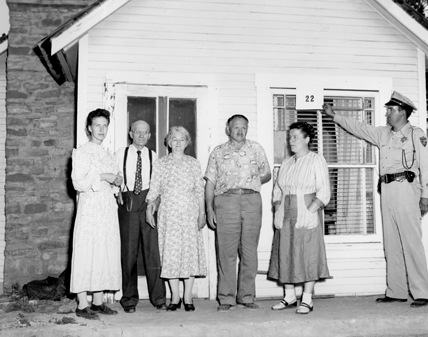 nine of the warrants were for individuals who lived on the Utah side of town. The charges included: rape, statutory rape, carnal knowledge, polygamous living, cohabitation, bigamy, adultery, and misappropriation of school funds (Bradley 1993:131). The raid sought to “rescue 263 children from virtual bondage under the communal United Effort Plan,” according to Attorney General Paul LaPrade. “The principle objective is to rescue these children from a life-time of immoral practices without their ever having had an opportunity to learn of or observe the outside world and its concepts of decent living” (LaPrade 1953).
nine of the warrants were for individuals who lived on the Utah side of town. The charges included: rape, statutory rape, carnal knowledge, polygamous living, cohabitation, bigamy, adultery, and misappropriation of school funds (Bradley 1993:131). The raid sought to “rescue 263 children from virtual bondage under the communal United Effort Plan,” according to Attorney General Paul LaPrade. “The principle objective is to rescue these children from a life-time of immoral practices without their ever having had an opportunity to learn of or observe the outside world and its concepts of decent living” (LaPrade 1953).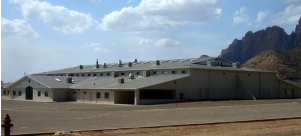 difference. The Johnson meetinghouse at the center of the community in Colorado City is the size of two LDS stake centers and is the backdrop for group worship services, community dances, and community business meetings. The central meeting space holds an audience of between 1,500 and 2,500. Also, the FLDS hold worship meetings throughout the week as was true in the nineteenth century LDS church. Like the LDS, fundamentalists wear sacred priesthood undergarments and choose modest clothing over modern popular styles.
difference. The Johnson meetinghouse at the center of the community in Colorado City is the size of two LDS stake centers and is the backdrop for group worship services, community dances, and community business meetings. The central meeting space holds an audience of between 1,500 and 2,500. Also, the FLDS hold worship meetings throughout the week as was true in the nineteenth century LDS church. Like the LDS, fundamentalists wear sacred priesthood undergarments and choose modest clothing over modern popular styles.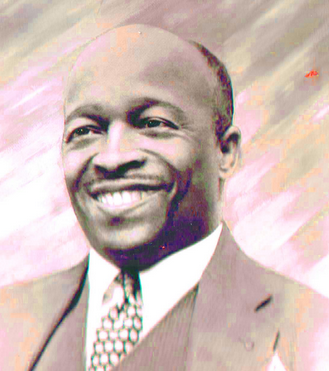 riding in the white section of a trolley, and refusing to attend segregated schools (Schaefer and Zellner 2008). By 1900, Baker was living in Baltimore, Maryland, where he worked as a gardener and assistant preacher in a local Baptist storefront church. He attended the Azusa Street Revival in 1906 and experienced a major spiritual awakening as he spoke in tongues. For the first time he began to recognize his inner divinity and think of himself in god-like terms (Watts 1995:25). In 1907, Baker met a man named Samuel Morris, a preacher to whom Baker was drawn and who called himself Father Jehovia. Baker found the philosophy that Morris taught, that God is within each individual, to be compelling. According to some reports, Morris referred to himself as God. The two men began working together, and Baker began to refer to himself as “the Messenger,” while sharing the godship with Father Jehovia.
riding in the white section of a trolley, and refusing to attend segregated schools (Schaefer and Zellner 2008). By 1900, Baker was living in Baltimore, Maryland, where he worked as a gardener and assistant preacher in a local Baptist storefront church. He attended the Azusa Street Revival in 1906 and experienced a major spiritual awakening as he spoke in tongues. For the first time he began to recognize his inner divinity and think of himself in god-like terms (Watts 1995:25). In 1907, Baker met a man named Samuel Morris, a preacher to whom Baker was drawn and who called himself Father Jehovia. Baker found the philosophy that Morris taught, that God is within each individual, to be compelling. According to some reports, Morris referred to himself as God. The two men began working together, and Baker began to refer to himself as “the Messenger,” while sharing the godship with Father Jehovia.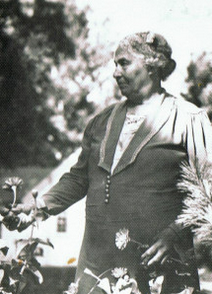 in a small house for several years. The Messenger took on responsibility for finding jobs for his followers, and they, in turn, returned their earnings to him. With those funds The Messenger paid for the rent, food, and living expenses. During this time, the group was growing slowly. Peninah, managed the house and prepared food for the group. At this time, or perhaps earlier as some sources suggest, The Messenger married Peninah despite his ban on marriage for his disciples. He stated that the marriage was spiritual and not sexual, as celibacy was required by the group’s moral code. It is not clear whether a marriage license was obtained. While living in New York, The Messenger decided to change his name once again. This time he assumed the name Major Jealous Devine, which was later abbreviated M.J. Devine. Subsequently, the name M.J. Devine evolved into Father Divine (2008).
in a small house for several years. The Messenger took on responsibility for finding jobs for his followers, and they, in turn, returned their earnings to him. With those funds The Messenger paid for the rent, food, and living expenses. During this time, the group was growing slowly. Peninah, managed the house and prepared food for the group. At this time, or perhaps earlier as some sources suggest, The Messenger married Peninah despite his ban on marriage for his disciples. He stated that the marriage was spiritual and not sexual, as celibacy was required by the group’s moral code. It is not clear whether a marriage license was obtained. While living in New York, The Messenger decided to change his name once again. This time he assumed the name Major Jealous Devine, which was later abbreviated M.J. Devine. Subsequently, the name M.J. Devine evolved into Father Divine (2008).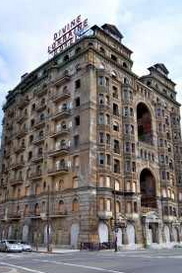 Father Divine providing both economic and spiritual security for his followers. Eventually, the movement obtained multiple hotels and other businesses. His followers refurbished the buildings and then worked for no wages, blacks and whites together, relying on Father Divine’s leadership. The beginning of the Great Depression and the increasing hardships that poor blacks faced provided an opportunity for Father Divine to advocate for his egalitarian heaven on Earth (Miller 1995). The Peace Mission Movement expanded to 150 “heavenly extensions;” Peace Mission gatherings were held in Canada, Australia, and several European countries. Membership in New York and Long Island peaked at 10,000 around this time. The Peace Mission drew members from the poor black community impacted by the Great Depression, white members who were attracted by the New Thought doctrines, and blacks who had participated in the Universal Negro Improvement Association before founder Marcus Garvey’s deportation in 1927. Watts (1995:85) estimates overall movement membership in the early 1930s as between 20,000 and 30,000.
Father Divine providing both economic and spiritual security for his followers. Eventually, the movement obtained multiple hotels and other businesses. His followers refurbished the buildings and then worked for no wages, blacks and whites together, relying on Father Divine’s leadership. The beginning of the Great Depression and the increasing hardships that poor blacks faced provided an opportunity for Father Divine to advocate for his egalitarian heaven on Earth (Miller 1995). The Peace Mission Movement expanded to 150 “heavenly extensions;” Peace Mission gatherings were held in Canada, Australia, and several European countries. Membership in New York and Long Island peaked at 10,000 around this time. The Peace Mission drew members from the poor black community impacted by the Great Depression, white members who were attracted by the New Thought doctrines, and blacks who had participated in the Universal Negro Improvement Association before founder Marcus Garvey’s deportation in 1927. Watts (1995:85) estimates overall movement membership in the early 1930s as between 20,000 and 30,000. 1930s that the group adopted the name “the International Peace Mission movement.” In 1934, Father Divine, who himself had created a type of communal socialism, forged a short-lived alliance with the Communist Party in the U.S. for a time after being impressed with its commitment to civil rights.
1930s that the group adopted the name “the International Peace Mission movement.” In 1934, Father Divine, who himself had created a type of communal socialism, forged a short-lived alliance with the Communist Party in the U.S. for a time after being impressed with its commitment to civil rights.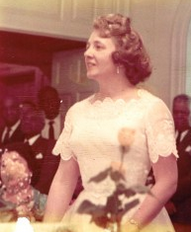 (the date is uncertain). Apparently, only a few of Father Divine’s inner circle knew of Peninah’s death, and she was quietly buried in an unmarked grave Father Divine never discussed her death, but in August 1946 he suddenly announced his marriage to a twenty-one year-old white follower, Edna Rose Ritchings, who was called Sweet Angel and had been one of his secretaries. Father Divine announced that Ritchings’ and Peninah’s spirits had joined together and thereby the two women had become one. Ritchings subsequently was known as Mother Divine within the movement. Father Divine once again emphasized that this marital union was spiritual and not sexual. This interracial marriage sparked public anger, shock among his followers, and some defections. However, she was accepted and revered within the movement. Father Divine and asserted that she was the incarnation of Peninah (Schaefer and Zellner 2008). The couple moved the headquarters to their current location, the Woodmont Estate, which is located outside of Philadelphia, Pennsylvania in 1953. Mother Divine significantly aided Father Divine in managing the movement during her younger years, and as his health declined she took on many more duties.
(the date is uncertain). Apparently, only a few of Father Divine’s inner circle knew of Peninah’s death, and she was quietly buried in an unmarked grave Father Divine never discussed her death, but in August 1946 he suddenly announced his marriage to a twenty-one year-old white follower, Edna Rose Ritchings, who was called Sweet Angel and had been one of his secretaries. Father Divine announced that Ritchings’ and Peninah’s spirits had joined together and thereby the two women had become one. Ritchings subsequently was known as Mother Divine within the movement. Father Divine once again emphasized that this marital union was spiritual and not sexual. This interracial marriage sparked public anger, shock among his followers, and some defections. However, she was accepted and revered within the movement. Father Divine and asserted that she was the incarnation of Peninah (Schaefer and Zellner 2008). The couple moved the headquarters to their current location, the Woodmont Estate, which is located outside of Philadelphia, Pennsylvania in 1953. Mother Divine significantly aided Father Divine in managing the movement during her younger years, and as his health declined she took on many more duties.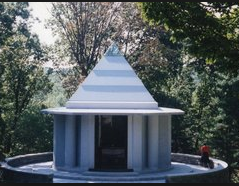 recruitment, preferring to preserve its elite status. The few hundred members scattered around the U.S. and Europe have continued to abide by the strict moral code that Father Divine instituted. A small number of members remain at Woodmont, aiding Mother Divine in giving tours of the property and performing day-to-day managerial duties (Schaefer and Zellner 2008). Mother Divine has generally been accepted as the incarnation of Father Divine, and has been treated as such, though his immortal spirit continues to be honored (Weisbrot 1995).
recruitment, preferring to preserve its elite status. The few hundred members scattered around the U.S. and Europe have continued to abide by the strict moral code that Father Divine instituted. A small number of members remain at Woodmont, aiding Mother Divine in giving tours of the property and performing day-to-day managerial duties (Schaefer and Zellner 2008). Mother Divine has generally been accepted as the incarnation of Father Divine, and has been treated as such, though his immortal spirit continues to be honored (Weisbrot 1995).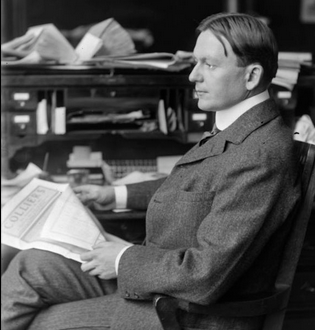 Members were taught that they possessed an inner divinity and that Christ was present in every part of every individual’s body. Father Divine was heavily influenced by writings of Robert Collier that advocate for a universal potential in humans, and that success can be realized through the use of their inner divinity. Father Divine focused on the self-image of members. A righteous individual is one with God and this requires positive thinking and an affirmative self-image. Father Divine stated, “The positive is a reality! We dispel the negative and the undesirable…” (Erikson 1977). This positive way of thinking brings the follower closer with God, and closer to the truth. Father Divine purchased copies of New Thought works and gave them to his disciples (Watts 1995). Many white followers were attracted to his movement by the New Thought teachings. Required reading for members included both the Bible and the Divine newspapers, until their publication was discontinued in 1992.
Members were taught that they possessed an inner divinity and that Christ was present in every part of every individual’s body. Father Divine was heavily influenced by writings of Robert Collier that advocate for a universal potential in humans, and that success can be realized through the use of their inner divinity. Father Divine focused on the self-image of members. A righteous individual is one with God and this requires positive thinking and an affirmative self-image. Father Divine stated, “The positive is a reality! We dispel the negative and the undesirable…” (Erikson 1977). This positive way of thinking brings the follower closer with God, and closer to the truth. Father Divine purchased copies of New Thought works and gave them to his disciples (Watts 1995). Many white followers were attracted to his movement by the New Thought teachings. Required reading for members included both the Bible and the Divine newspapers, until their publication was discontinued in 1992.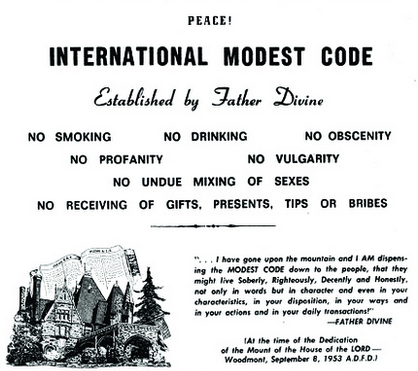 obscenity, vulgarity, profanity, undue mixing of the sexes, and receiving gifts, presents or bribes. The restrictions on men and women were stringent. Women were not to wear slacks or short skirts and men short-sleeves. Those who stayed at the hotels owned by the Movement, such as the Divine Lorraine, were asked to abide by the code, which was said to prompt “modest, independence, honesty, and righteousness” (Primiano 2013). A plaque was posted in each room containing the rules and regulations. Guests were separated by gender. Although times have changed, the rules for modest dress remained important up until the closing of the Divine Lorraine in 1999. Women were asked to avoid wearing pants, short skirts, bare midriffs, halters, and low cut necklines, and hair curlers. Men could not wear hats, sleeveless shirts, or untucked shirts. A plaque was posted in each room stating the rules and regulations (Primiano 2013). More significantly both for members and the future of the movement, men and women were required to remain celibate. This mandate was gradually extended from Father Divine’s inner circle to all serious followers. Father Divine taught that humans born as a product of sexual intercourse were “born wrong” and that learning how not to be born was the key to learning how not to die (Black n.d.). In stipulating this code of conduct, Father Divine taught that there was no small crime, and that all crimes stem from the same evil impulses (Weisbrot 1995).
obscenity, vulgarity, profanity, undue mixing of the sexes, and receiving gifts, presents or bribes. The restrictions on men and women were stringent. Women were not to wear slacks or short skirts and men short-sleeves. Those who stayed at the hotels owned by the Movement, such as the Divine Lorraine, were asked to abide by the code, which was said to prompt “modest, independence, honesty, and righteousness” (Primiano 2013). A plaque was posted in each room containing the rules and regulations. Guests were separated by gender. Although times have changed, the rules for modest dress remained important up until the closing of the Divine Lorraine in 1999. Women were asked to avoid wearing pants, short skirts, bare midriffs, halters, and low cut necklines, and hair curlers. Men could not wear hats, sleeveless shirts, or untucked shirts. A plaque was posted in each room stating the rules and regulations (Primiano 2013). More significantly both for members and the future of the movement, men and women were required to remain celibate. This mandate was gradually extended from Father Divine’s inner circle to all serious followers. Father Divine taught that humans born as a product of sexual intercourse were “born wrong” and that learning how not to be born was the key to learning how not to die (Black n.d.). In stipulating this code of conduct, Father Divine taught that there was no small crime, and that all crimes stem from the same evil impulses (Weisbrot 1995).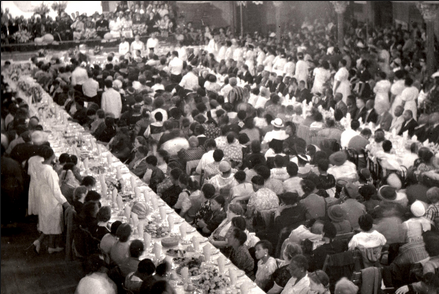 during the Great Depression to provide free meals to his followers. There were, and still are, multiple courses served by waiters. Father Divine blessed each dish before it was served. The large gatherings and various courses called for a lengthy dinner that incorporated joyful songs by the different choruses in attendance. At the end of the dinner celebration, Father Divine would stand and give his sermon. The audience would respond with exuberant shouting, jumping, and crying. These banquets, given weekly, were a sign of Father Divine’s charity as well as his wealth. To his followers, the banquets signified his support and his kindness, and they drew many people to him. These banquets are still hosted by the small groups that remain active (Schaefer and Zellner 2008).
during the Great Depression to provide free meals to his followers. There were, and still are, multiple courses served by waiters. Father Divine blessed each dish before it was served. The large gatherings and various courses called for a lengthy dinner that incorporated joyful songs by the different choruses in attendance. At the end of the dinner celebration, Father Divine would stand and give his sermon. The audience would respond with exuberant shouting, jumping, and crying. These banquets, given weekly, were a sign of Father Divine’s charity as well as his wealth. To his followers, the banquets signified his support and his kindness, and they drew many people to him. These banquets are still hosted by the small groups that remain active (Schaefer and Zellner 2008).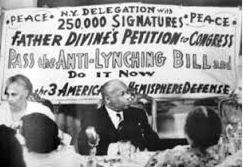 as well as anti-lynching laws and further government involvement during the Great Depression. Father Divine led movements and events in New York with his followers. Although Father Divine and the movement participated in meetings and parades with the Communist Party USA, the movement would not be active in the Civil Rights Movement that occurred years later. During the Red Scare, Father Divine took a more anti-communist stance. Later, Mother Divine did not continue his political activity, and the movement became much less politically involved.
as well as anti-lynching laws and further government involvement during the Great Depression. Father Divine led movements and events in New York with his followers. Although Father Divine and the movement participated in meetings and parades with the Communist Party USA, the movement would not be active in the Civil Rights Movement that occurred years later. During the Red Scare, Father Divine took a more anti-communist stance. Later, Mother Divine did not continue his political activity, and the movement became much less politically involved.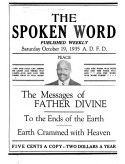 auxiliary groups (Weisbrot 1995). The movement also supported two publications: The Spoken Word (1934–1937) and the New Day (1936–1989). Both were available to members and the general public. These publications contained articles on issues of the day as well as world and local events.
auxiliary groups (Weisbrot 1995). The movement also supported two publications: The Spoken Word (1934–1937) and the New Day (1936–1989). Both were available to members and the general public. These publications contained articles on issues of the day as well as world and local events.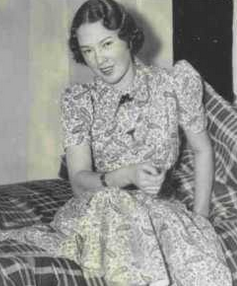 Mission were of considerable interest. Father Divines marriage to Mother Divine, fifty years his junior and white, was scandalous during that period. One sexual abuse scandal that occurred with the movement involved an illicit sexual relationship between an adult Peace Mission member, John Hunt, who took seventeen year-old Delight Dewett across state lines for “immoral purposes” after she came to believe that she was to be the Virgin Mary and mother of the next redeemer. Although Father Divine castigated Hunt and supported his criminal conviction, public suspicion of the movement and negative publicity increased.
Mission were of considerable interest. Father Divines marriage to Mother Divine, fifty years his junior and white, was scandalous during that period. One sexual abuse scandal that occurred with the movement involved an illicit sexual relationship between an adult Peace Mission member, John Hunt, who took seventeen year-old Delight Dewett across state lines for “immoral purposes” after she came to believe that she was to be the Virgin Mary and mother of the next redeemer. Although Father Divine castigated Hunt and supported his criminal conviction, public suspicion of the movement and negative publicity increased.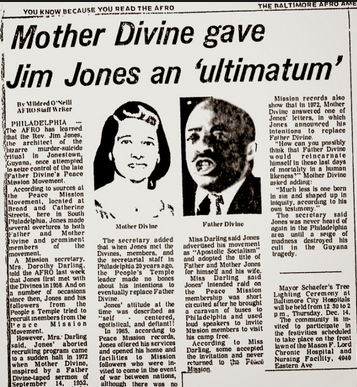 influenced by Father Divine (Hall 1987). He visited Father Divine in Philadelphia multiple times during the 1950s, and Divine was welcoming and warm to Jones. Both Jones and Divine had roots in Pentecostalism, advocated for racial equality and promoted an integrated church. Jones found appeal in Father Divine’s claim of his own divinity, the idea of being the “Father” within the movement, the message of the inner divinity of all humans, the promised land theme that would allow an escape from poverty and repression. Early in Jim Jones career, he modeled activities after Father Divine’s Peace Mission. He instituted a church adoption fund, which, like Father Divine’s endeavors, was funded through church dinners and businesses; opened a free social service and meals center in the Peoples Temple basement that gave away thousands of meals each month, as well as encouraging integration; and established a free grocery store, gave away clothing, and provided other social services. At the same time, Father Divine and Jim Jones took separate paths on other matters. Jones advocated socialism as the answer to most of America’s problems, while Father Divine championed Black capitalism (Chidester 1988).
influenced by Father Divine (Hall 1987). He visited Father Divine in Philadelphia multiple times during the 1950s, and Divine was welcoming and warm to Jones. Both Jones and Divine had roots in Pentecostalism, advocated for racial equality and promoted an integrated church. Jones found appeal in Father Divine’s claim of his own divinity, the idea of being the “Father” within the movement, the message of the inner divinity of all humans, the promised land theme that would allow an escape from poverty and repression. Early in Jim Jones career, he modeled activities after Father Divine’s Peace Mission. He instituted a church adoption fund, which, like Father Divine’s endeavors, was funded through church dinners and businesses; opened a free social service and meals center in the Peoples Temple basement that gave away thousands of meals each month, as well as encouraging integration; and established a free grocery store, gave away clothing, and provided other social services. At the same time, Father Divine and Jim Jones took separate paths on other matters. Jones advocated socialism as the answer to most of America’s problems, while Father Divine championed Black capitalism (Chidester 1988).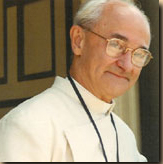 During the 1940s Blighton worked as a draftsman and engineer for the General Railway Signal Company and the Rochester Telephone Company. He also helped build radio stations for the United States Navy and designed optical instruments for Eastman Kodak. Blighton invented an electrical apparatus that he called the ultra theory ray machine. By irradiating patients with a sequence of colored light, he gained some success as a spiritual healer. Ultimately, this work led to his arrest and conviction for practicing medicine without a license in 1946.
During the 1940s Blighton worked as a draftsman and engineer for the General Railway Signal Company and the Rochester Telephone Company. He also helped build radio stations for the United States Navy and designed optical instruments for Eastman Kodak. Blighton invented an electrical apparatus that he called the ultra theory ray machine. By irradiating patients with a sequence of colored light, he gained some success as a spiritual healer. Ultimately, this work led to his arrest and conviction for practicing medicine without a license in 1946.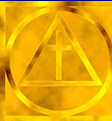 taught that the material or spiritual conditions that a person sought in their lives could be gained through the visualization of esoteric symbols on the mental plane and by speaking the “word of power” (Lucas 1995:38). Blighton thought that all things in the universe were first derived from the circle, square, and triangle. The circle represented the Godhead and “the unity of all things” (1995:39). The triangle represented the process of creation. The square represented the “material plane” (1995:39). The symbol for the order became a triangle within a circle within a square.
taught that the material or spiritual conditions that a person sought in their lives could be gained through the visualization of esoteric symbols on the mental plane and by speaking the “word of power” (Lucas 1995:38). Blighton thought that all things in the universe were first derived from the circle, square, and triangle. The circle represented the Godhead and “the unity of all things” (1995:39). The triangle represented the process of creation. The square represented the “material plane” (1995:39). The symbol for the order became a triangle within a circle within a square.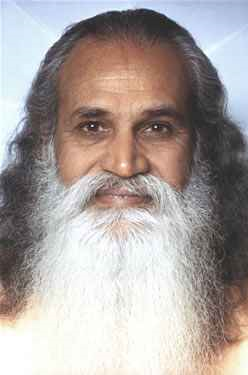 adult life was quite secular in nature. He graduated from an agricultural school and worked in the automotive industry before becoming a manager in the National Electric Works. In the hagiographic account of his life, however, Swami Satchidananda is described as having been intensely spiritual from childhood: “Even as a young child, he spoke truths and displayed insights far beyond his years. His devotion to God was strong, and he looked at people of all castes and faiths with an equal eye, always recognizing the same light within every being” (Perringer n.d.) While working as the manager of a Hindu temple, Grounder met and married his wife, and the couple gave birth to two children. However, five years later his wife died suddenly. Following his wife’s death, Grounder renounced the world and began his spiritual career at age twenty eight.
adult life was quite secular in nature. He graduated from an agricultural school and worked in the automotive industry before becoming a manager in the National Electric Works. In the hagiographic account of his life, however, Swami Satchidananda is described as having been intensely spiritual from childhood: “Even as a young child, he spoke truths and displayed insights far beyond his years. His devotion to God was strong, and he looked at people of all castes and faiths with an equal eye, always recognizing the same light within every being” (Perringer n.d.) While working as the manager of a Hindu temple, Grounder met and married his wife, and the couple gave birth to two children. However, five years later his wife died suddenly. Following his wife’s death, Grounder renounced the world and began his spiritual career at age twenty eight.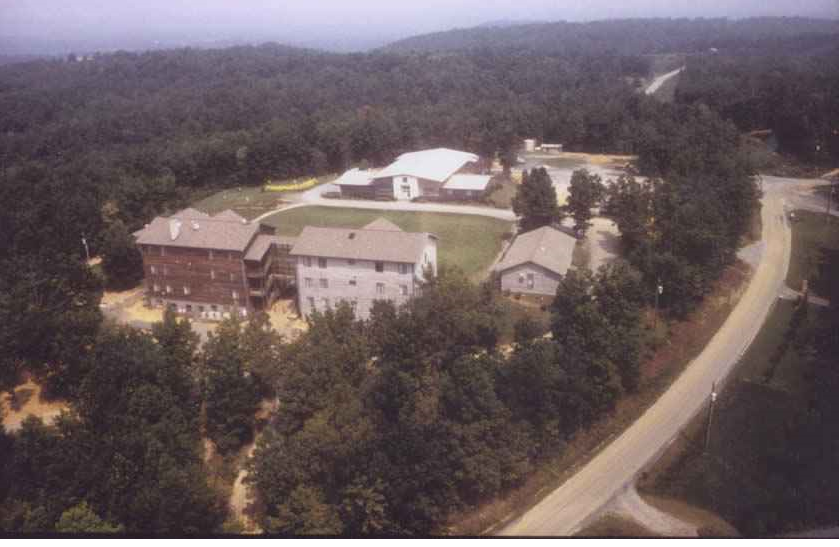 following year to purchase a 650 acre tract in Buckingham County, Virginia to IYI. It was in Buckingham County that construction began on the Light of Truth Universal Shrine (LOTUS) at the new Satchidananda Ashram-Yogaville (SAYVA). LOTUS is described as a temple for all world religions where one can find the Spirit that unites everything. LOTUS held a dedication ceremony on July 20, 1986, after which SAYVA became the new headquarters for IYI.
following year to purchase a 650 acre tract in Buckingham County, Virginia to IYI. It was in Buckingham County that construction began on the Light of Truth Universal Shrine (LOTUS) at the new Satchidananda Ashram-Yogaville (SAYVA). LOTUS is described as a temple for all world religions where one can find the Spirit that unites everything. LOTUS held a dedication ceremony on July 20, 1986, after which SAYVA became the new headquarters for IYI.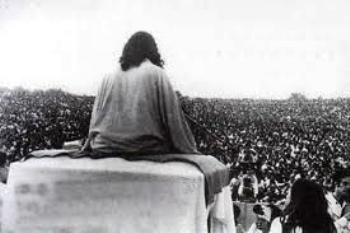 chant “Hari Om.” His message to the assembled was to find peace within: “I still don’t understand how they are going to fight and then find peace. Therefore, let us not fight for peace, but let us find peace within ourselves first” (Satchidanda 1969). He touted Integral Yoga as a means to abandon drug use, stating that “The problem with drugs is that while they elevate you, they immediately drop you back down again” while Integral Yoga offered a “natural high (Katz 1992:377). Satchidanada subsequently attracted many wealthy and prestigious followers.
chant “Hari Om.” His message to the assembled was to find peace within: “I still don’t understand how they are going to fight and then find peace. Therefore, let us not fight for peace, but let us find peace within ourselves first” (Satchidanda 1969). He touted Integral Yoga as a means to abandon drug use, stating that “The problem with drugs is that while they elevate you, they immediately drop you back down again” while Integral Yoga offered a “natural high (Katz 1992:377). Satchidanada subsequently attracted many wealthy and prestigious followers. major religions, as well as two additional alters, one dedicated to other known religions and the other dedicated to those still unknown. The outside of the shrine contains fountains and gardens, many with spiritual symbolism. The interior of the shrine consists of two floors; the bottom floor houses cases that display artifacts of the religions represented in the alters, which are located on the top floor of the shrine.
major religions, as well as two additional alters, one dedicated to other known religions and the other dedicated to those still unknown. The outside of the shrine contains fountains and gardens, many with spiritual symbolism. The interior of the shrine consists of two floors; the bottom floor houses cases that display artifacts of the religions represented in the alters, which are located on the top floor of the shrine.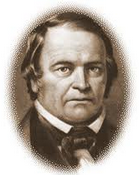 diligent study he had been unable to unravel the mysteries of the biblical book of Revelation and, hence, of the time of the end of the world and the second coming of Jesus. From 1831 to 1843 he estimated that he had brought his message to a half million persons. By Miller’s calculation, the return of Jesus would happen between March 21, 1843 and March 21, 1844. When latter date passed without anything significant happening, Miller, like many others who have prophesied the end, did not lose faith in his prediction. Instead, he adjusted his calculations and reset the date for October 22, 1844. Expectations heightened as summer turned into fall, but the date again came and went without incident. Those who had believed Miller’s prophecy experienced what came to be called the “Great Disappointment , ” and his prophetic career came to an end. But even that second experience of disconfirmation was not sufficient to quell completely an interest in the imminent dawn of the millennium (Rowe 2008: 192-225).
diligent study he had been unable to unravel the mysteries of the biblical book of Revelation and, hence, of the time of the end of the world and the second coming of Jesus. From 1831 to 1843 he estimated that he had brought his message to a half million persons. By Miller’s calculation, the return of Jesus would happen between March 21, 1843 and March 21, 1844. When latter date passed without anything significant happening, Miller, like many others who have prophesied the end, did not lose faith in his prediction. Instead, he adjusted his calculations and reset the date for October 22, 1844. Expectations heightened as summer turned into fall, but the date again came and went without incident. Those who had believed Miller’s prophecy experienced what came to be called the “Great Disappointment , ” and his prophetic career came to an end. But even that second experience of disconfirmation was not sufficient to quell completely an interest in the imminent dawn of the millennium (Rowe 2008: 192-225).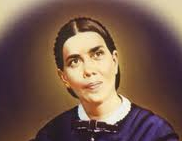 guided by revelation from God in their own time. Ellen G. White, who became the group’s prophet, came to call that contemporary revelation “present truth” or “new light.” The twin foci of observing the Lord’s Day on Saturday and maintaining the expectation of Jesus’ imminent return to initiate the final judgment would remain central characteristics of Seventh-day Adventism from the time of its origins in the small band of New Hampshire Millerites through its entire history. The openness to receiving prophetic “present truth” introduced a principle of dynamism into the broad Adventist tradition that played an especially important role in the origins of both the Davidians and the Branch Davidians (see Gallagher 2013) .
guided by revelation from God in their own time. Ellen G. White, who became the group’s prophet, came to call that contemporary revelation “present truth” or “new light.” The twin foci of observing the Lord’s Day on Saturday and maintaining the expectation of Jesus’ imminent return to initiate the final judgment would remain central characteristics of Seventh-day Adventism from the time of its origins in the small band of New Hampshire Millerites through its entire history. The openness to receiving prophetic “present truth” introduced a principle of dynamism into the broad Adventist tradition that played an especially important role in the origins of both the Davidians and the Branch Davidians (see Gallagher 2013) .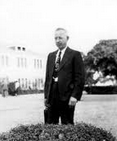 immigrant to the United States who joined the Seventh-day Adventist (SDA) Church in 1919 in Illinois . As Houteff studied the Bible, he developed two distinctive ideas that were out of conformity with established SDA doctrine. First, expressing a vivid sectarian indictment of the SDA Church, he disagreed with Ellen G. White that the 144,000 mentioned in Revelation 7 as being worthy of entering the new Jerusalem referred to the Adventists themselves. Instead, he argued that the Church had become complacent and pervaded by “worldly” influences. He saw his own mission as purifying the church from within and gathering a truly faithful 144,000 in anticipation of the Lord’s return. Second, he argued that it was his task to lead the purified 144,000 to the ancient land of Israel , where they would meet Christ at his return. Both the Davidian and Branch Davidian traditions developed an elitist self-conception according to which they would be the first to be redeemed upon the return of Jesus. Borrowing a concept from the agricultural festivals of the ancient Israelites, Ben Roden , one of the leaders who followed Houteff, described the Branch Davidians as “the first of the first fruits – wave-sheaf, vanguard NOT wave-loaves – 144,000, army” of the final harvest of salvation (Ben Roden 1959: 4).
immigrant to the United States who joined the Seventh-day Adventist (SDA) Church in 1919 in Illinois . As Houteff studied the Bible, he developed two distinctive ideas that were out of conformity with established SDA doctrine. First, expressing a vivid sectarian indictment of the SDA Church, he disagreed with Ellen G. White that the 144,000 mentioned in Revelation 7 as being worthy of entering the new Jerusalem referred to the Adventists themselves. Instead, he argued that the Church had become complacent and pervaded by “worldly” influences. He saw his own mission as purifying the church from within and gathering a truly faithful 144,000 in anticipation of the Lord’s return. Second, he argued that it was his task to lead the purified 144,000 to the ancient land of Israel , where they would meet Christ at his return. Both the Davidian and Branch Davidian traditions developed an elitist self-conception according to which they would be the first to be redeemed upon the return of Jesus. Borrowing a concept from the agricultural festivals of the ancient Israelites, Ben Roden , one of the leaders who followed Houteff, described the Branch Davidians as “the first of the first fruits – wave-sheaf, vanguard NOT wave-loaves – 144,000, army” of the final harvest of salvation (Ben Roden 1959: 4). known by that name ( Victor Houteff 1930) . The first volume was quickly followed by a second and throughout the 1930s, 1940s and early 1950s Houteff produced multiple religious tracts and collections of his sermons that were distributed by the Davidian publishing operation to a growing list of SDA Church members. In February, 1943 he published The Leviticus of the Davidian Seventh-day Adventists , which details the constitution, by-laws, system of government, and form of education for the Davidian community (Victor Houteff 1943) . Much of the one hundred page document is devoted to citing the authorizing precedents from both the Bible and the writings of Ellen G. White.
known by that name ( Victor Houteff 1930) . The first volume was quickly followed by a second and throughout the 1930s, 1940s and early 1950s Houteff produced multiple religious tracts and collections of his sermons that were distributed by the Davidian publishing operation to a growing list of SDA Church members. In February, 1943 he published The Leviticus of the Davidian Seventh-day Adventists , which details the constitution, by-laws, system of government, and form of education for the Davidian community (Victor Houteff 1943) . Much of the one hundred page document is devoted to citing the authorizing precedents from both the Bible and the writings of Ellen G. White.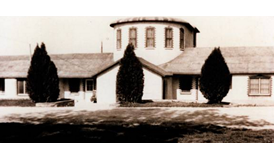 generation religious group. Kenneth Newport suggests that at least some of the 100 or so members of the Mount Carmel community probably left after Houteff’s death, but those who remained faced the task of developing new leadership (Newport 2006: 66). Into that breach entered Houteff’s wife, Florence, along with several other contenders. Soon after Victor’s death, Florence began to make predictions about the future of the community, apparently including the idea that Victor himself would be resurrected. Claiming that on his deathbed Victor had urged her to take over his position, Florence quickly and persistently made her case to the Executive Council of the Davidian Association and eventually garnered their recognition.
generation religious group. Kenneth Newport suggests that at least some of the 100 or so members of the Mount Carmel community probably left after Houteff’s death, but those who remained faced the task of developing new leadership (Newport 2006: 66). Into that breach entered Houteff’s wife, Florence, along with several other contenders. Soon after Victor’s death, Florence began to make predictions about the future of the community, apparently including the idea that Victor himself would be resurrected. Claiming that on his deathbed Victor had urged her to take over his position, Florence quickly and persistently made her case to the Executive Council of the Davidian Association and eventually garnered their recognition.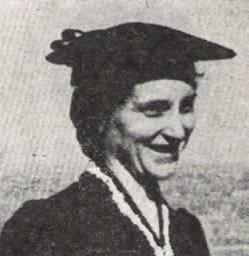 Code, of which nine volumes had been published during her husband’s life (Florence Houteff 1955-1958). To this day there remains controversy about whether Florence ‘s “new Codes” contain the genuine teaching of her husband. But by far the most dramatic and controversial move that Florence made was to set the date of the beginning of the end times. Echoing William Miller’s decision that produced the Great Disappointment, Florence proclaimed that at the end of the Passover season, on April 22, 1959, the events of the end would begin to take place (Newport 2006:101). She urged the Davidians to assemble at the Mount Carmel Center, and some 1,000 did.
Code, of which nine volumes had been published during her husband’s life (Florence Houteff 1955-1958). To this day there remains controversy about whether Florence ‘s “new Codes” contain the genuine teaching of her husband. But by far the most dramatic and controversial move that Florence made was to set the date of the beginning of the end times. Echoing William Miller’s decision that produced the Great Disappointment, Florence proclaimed that at the end of the Passover season, on April 22, 1959, the events of the end would begin to take place (Newport 2006:101). She urged the Davidians to assemble at the Mount Carmel Center, and some 1,000 did.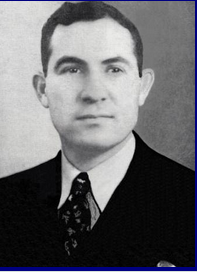 person of Benjamin Roden (1902-1978). After joining the SDA church in 1940 Roden and his wife Lois (1905-1986) had first encountered Victor Houteff’s Shepherd’s Rod message sometime in the mid-1940s. It appears that the Rodens had first visited Mount Carmel no later than 1945. They returned several times over the next decade, and when Victor Houteff died in 1955, Ben Roden was confident enough of himself that he made an unsuccessful bid for the leadership of the community.
person of Benjamin Roden (1902-1978). After joining the SDA church in 1940 Roden and his wife Lois (1905-1986) had first encountered Victor Houteff’s Shepherd’s Rod message sometime in the mid-1940s. It appears that the Rodens had first visited Mount Carmel no later than 1945. They returned several times over the next decade, and when Victor Houteff died in 1955, Ben Roden was confident enough of himself that he made an unsuccessful bid for the leadership of the community.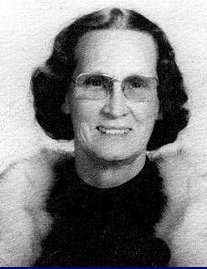 Last Judgment was again delayed. But Roden’s death did not threaten the community with disintegration because his wife Lois was already poised to assume the responsibility of leadership, although the Roden’s son George did dispute her right of succession and would remain a serious irritant to the Mount Carmel community for some time. Like her husband, Lois based her claims on charismatic grounds. She had begun to receive revelations in 1977, and they were the driving force for her innovative theological program, particularly the idea that the Holy Spirit was feminine (Lois Roden 1980). George resorted to more traditional grounds for his claims, asserting that his father had appointed him to a central role in the movement, since Ben Roden believed that his sons would live to see the rebuilding of the temple in Jerusalem .
Last Judgment was again delayed. But Roden’s death did not threaten the community with disintegration because his wife Lois was already poised to assume the responsibility of leadership, although the Roden’s son George did dispute her right of succession and would remain a serious irritant to the Mount Carmel community for some time. Like her husband, Lois based her claims on charismatic grounds. She had begun to receive revelations in 1977, and they were the driving force for her innovative theological program, particularly the idea that the Holy Spirit was feminine (Lois Roden 1980). George resorted to more traditional grounds for his claims, asserting that his father had appointed him to a central role in the movement, since Ben Roden believed that his sons would live to see the rebuilding of the temple in Jerusalem .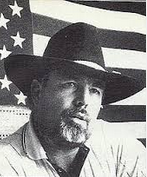 behalf, directing his vitriol first against his mother and then against her and David Koresh, who, as Vernon Howell, joined the Mount Carmel community in 1981. George eventually succeeded in winning a leadership election in 1984, after which he assertively changed the name of Mount Carmel to “Rodenville” and vigorously argued for his primacy. It took a complex series of events, including multiple hearings in court, George’s conviction on contempt of court charges, and his 1989 arrest for murder and eventual confinement in a mental institution, before Koresh could enjoy uncontested leadership of the Branch Davidians.
behalf, directing his vitriol first against his mother and then against her and David Koresh, who, as Vernon Howell, joined the Mount Carmel community in 1981. George eventually succeeded in winning a leadership election in 1984, after which he assertively changed the name of Mount Carmel to “Rodenville” and vigorously argued for his primacy. It took a complex series of events, including multiple hearings in court, George’s conviction on contempt of court charges, and his 1989 arrest for murder and eventual confinement in a mental institution, before Koresh could enjoy uncontested leadership of the Branch Davidians.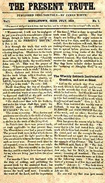 offshoots from that tradition. In the early days of the SDA Church, James White, a founder of the SDAs along with his wife Ellen, published a periodical entitled The Present Truth. On the first page of its first issue in 1849, he cited the promise of the author of II Peter 1:12 to the early Christian church, “I will not be negligent to put you always in remembrance of these things, though ye know them, and be established in the present truth.” White argued that such present truth could not be limited to the apostolic age but must at least potentially be continually available. He wrote that “Present truth must be oft repeated, even to those who are established in it. This was needful in the apostles (sic) day, and it certainly is no less important for us, who are living just before the close of time.” (James White 1849:1). Similarly, with regard to the observance of the Sabbath on Saturday, Ellen G. White wrote in her second volume of Testimonies for the Church (1885) that “The present truth, which is a test to the people of this generation, was not a test to the people of generations far back. If the light which now shines upon us in regard to the Sabbath of the fourth commandment had been given to the generations in the past, God would have held them accountable for that light.” (Ellen White 1885: 693).
offshoots from that tradition. In the early days of the SDA Church, James White, a founder of the SDAs along with his wife Ellen, published a periodical entitled The Present Truth. On the first page of its first issue in 1849, he cited the promise of the author of II Peter 1:12 to the early Christian church, “I will not be negligent to put you always in remembrance of these things, though ye know them, and be established in the present truth.” White argued that such present truth could not be limited to the apostolic age but must at least potentially be continually available. He wrote that “Present truth must be oft repeated, even to those who are established in it. This was needful in the apostles (sic) day, and it certainly is no less important for us, who are living just before the close of time.” (James White 1849:1). Similarly, with regard to the observance of the Sabbath on Saturday, Ellen G. White wrote in her second volume of Testimonies for the Church (1885) that “The present truth, which is a test to the people of this generation, was not a test to the people of generations far back. If the light which now shines upon us in regard to the Sabbath of the fourth commandment had been given to the generations in the past, God would have held them accountable for that light.” (Ellen White 1885: 693).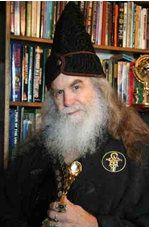 Missouri. As a child, Zell read the Greek myths and fairy tales, which instilled in him an affinity for myth and magic. He also had paranormal experiences, such as experiencing visions from his grandfather’s life. Zell enrolled in Westminster College in Fulton, Missouri in 1961 and was married for the first time in 1963. Timothy and Martha (McCance) Zell had a son that same year. Zell went on to receive his undergraduate degree in psychology from Westminster in 1965, enrolled as a graduate student at Washington University in St. Louis for a short time, and then enrolled in Life Science College in Rolling Meadows, Illinois. Two years later was awarded a Doctor of Divinity degree.
Missouri. As a child, Zell read the Greek myths and fairy tales, which instilled in him an affinity for myth and magic. He also had paranormal experiences, such as experiencing visions from his grandfather’s life. Zell enrolled in Westminster College in Fulton, Missouri in 1961 and was married for the first time in 1963. Timothy and Martha (McCance) Zell had a son that same year. Zell went on to receive his undergraduate degree in psychology from Westminster in 1965, enrolled as a graduate student at Washington University in St. Louis for a short time, and then enrolled in Life Science College in Rolling Meadows, Illinois. Two years later was awarded a Doctor of Divinity degree.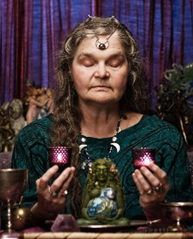 organizations. He separated from and divorced his first wife, and had brief relationships with other women before marrying Diana Moore (Morning Glory Ravenheart) at a public Pagan handfasting. Moore, who was born in 1948 in Long Beach, had attended Methodist and Pentecostal churches during her childhood, but broke with Christianity as a teen. She began practicing witchcraft at seventeen and changed her name to Morning Glory at twenty. She was married for a short time before meeting and soon marrying Zell in 1973. The couple sustained a lifelong, but sexually open (polyamorous), marital relationship. Among these relationships were the formation of a triad with Diane Darling, who became editor of Green Egg in 1988, and a triad with Wolf Dean Stiles, which led to the adoption of Ravenheart as a family name for all three partners.
organizations. He separated from and divorced his first wife, and had brief relationships with other women before marrying Diana Moore (Morning Glory Ravenheart) at a public Pagan handfasting. Moore, who was born in 1948 in Long Beach, had attended Methodist and Pentecostal churches during her childhood, but broke with Christianity as a teen. She began practicing witchcraft at seventeen and changed her name to Morning Glory at twenty. She was married for a short time before meeting and soon marrying Zell in 1973. The couple sustained a lifelong, but sexually open (polyamorous), marital relationship. Among these relationships were the formation of a triad with Diane Darling, who became editor of Green Egg in 1988, and a triad with Wolf Dean Stiles, which led to the adoption of Ravenheart as a family name for all three partners.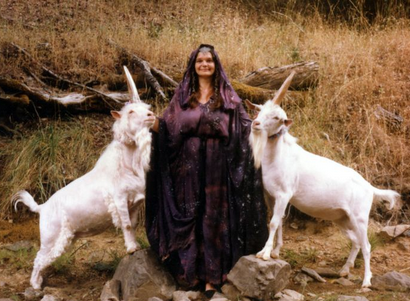 Ecosophical Research Association, Universal Federation of Pagans, Grey School of Wizardry). The Ecosophical Research Association offered a source of income for a time as the Zells produced unicorns by breeding and surgically altering white goats, four of which were sold to Ringling Bros. Barnum & Bailey Circus in 1984. The following year the organization, which aims to “explore the territory of the archetype, the basis of legends and the boundaries between the sacred and the secular” and specializes in crypozoology, undertook a search for mermaids in the South Seas (Adler 1975:317). The Grey School of Wizardry, founded in 2004, is a magickal education system that is organized online.
Ecosophical Research Association, Universal Federation of Pagans, Grey School of Wizardry). The Ecosophical Research Association offered a source of income for a time as the Zells produced unicorns by breeding and surgically altering white goats, four of which were sold to Ringling Bros. Barnum & Bailey Circus in 1984. The following year the organization, which aims to “explore the territory of the archetype, the basis of legends and the boundaries between the sacred and the secular” and specializes in crypozoology, undertook a search for mermaids in the South Seas (Adler 1975:317). The Grey School of Wizardry, founded in 2004, is a magickal education system that is organized online.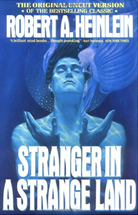
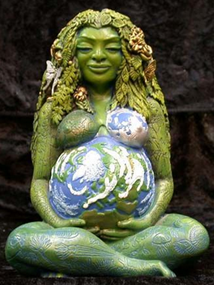 of the Goddess,” which was later developed into “The Gaea Thesis.” It posits that “the entire Biosphere of the Earth comprises a single living organism” and is composed of all living life-forms (Cusack 2010:65; Adler 1975:298). Zell (2010) traces the evolution of the Biosphere of the Earth back to a single living cell:
of the Goddess,” which was later developed into “The Gaea Thesis.” It posits that “the entire Biosphere of the Earth comprises a single living organism” and is composed of all living life-forms (Cusack 2010:65; Adler 1975:298). Zell (2010) traces the evolution of the Biosphere of the Earth back to a single living cell: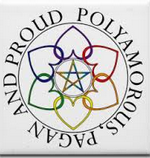 credited with inventing the concept of polyamory in “A Bouquet of Lovers.” As she describes polyamorous relationships, “The goal of a responsible Open Relationship is to cultivate ongoing, long-term, complex relationships which are rooted in deep mutual friendships.” Polyamory is thus one of the expressions of human interconnectedness and protests against divisive exclusivity. Open relationships are sustained by honesty, transparency, mutual agreement. A further provision is that unprotected sexual relationships may by practiced only within the group, which is the “Condom Compact” (Morning Glory Zell n.d.).
credited with inventing the concept of polyamory in “A Bouquet of Lovers.” As she describes polyamorous relationships, “The goal of a responsible Open Relationship is to cultivate ongoing, long-term, complex relationships which are rooted in deep mutual friendships.” Polyamory is thus one of the expressions of human interconnectedness and protests against divisive exclusivity. Open relationships are sustained by honesty, transparency, mutual agreement. A further provision is that unprotected sexual relationships may by practiced only within the group, which is the “Condom Compact” (Morning Glory Zell n.d.).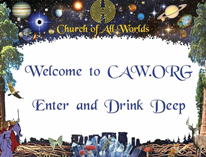 heritage, decries the absence of meaningful ritual in American culture:
heritage, decries the absence of meaningful ritual in American culture: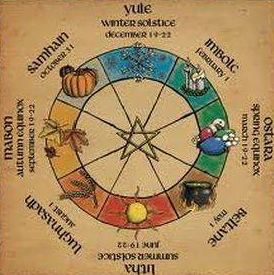 commonly referred to as the “Wheel of the Year.” These include days of the solstices and equinoxes and the cross quarter days. Many members ritually observe the Full and/or New Moon monthly. Waterkin typically believe that the ritual observation of the “Wheel of the Year” and cycles of the Moon can bring about a communion with Divinity through attunement of one’s life with the waxing and waning of Nature. The changing seasons, the waxing and waning of darkness and light, are understood as an expression of the life cycle of Divinity that includes birth, love, death and rebirth. CAW also holds initiation, handfastings, vision quests, retreats and workshops of various kinds.
commonly referred to as the “Wheel of the Year.” These include days of the solstices and equinoxes and the cross quarter days. Many members ritually observe the Full and/or New Moon monthly. Waterkin typically believe that the ritual observation of the “Wheel of the Year” and cycles of the Moon can bring about a communion with Divinity through attunement of one’s life with the waxing and waning of Nature. The changing seasons, the waxing and waning of darkness and light, are understood as an expression of the life cycle of Divinity that includes birth, love, death and rebirth. CAW also holds initiation, handfastings, vision quests, retreats and workshops of various kinds. each of which contains three concentric Circles. The Rings are described as “ an initiatory path leading ever inward , towards the consciousness of the Goddess/God Within, with a threefold purpose of a) self actualization, b) connection / tribal involvement and c) service” (Maureen n.d.; “The Church of All Worlds n.d.).
each of which contains three concentric Circles. The Rings are described as “ an initiatory path leading ever inward , towards the consciousness of the Goddess/God Within, with a threefold purpose of a) self actualization, b) connection / tribal involvement and c) service” (Maureen n.d.; “The Church of All Worlds n.d.).